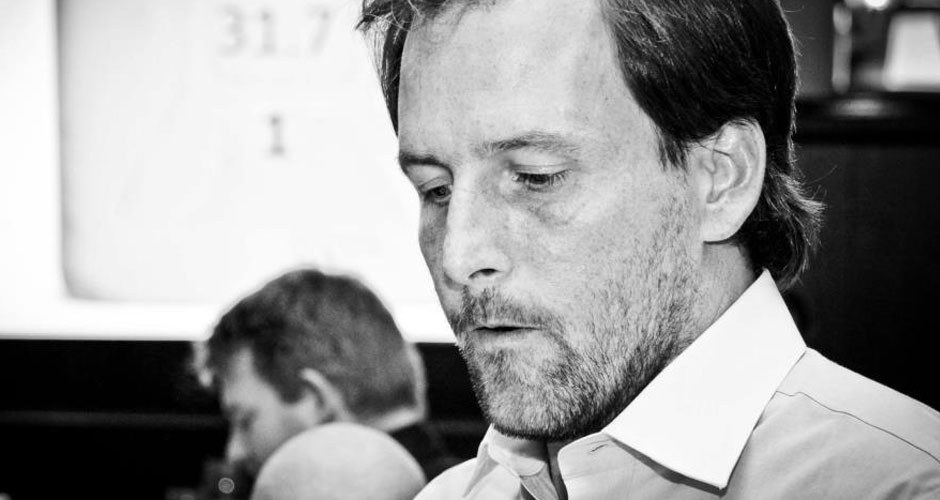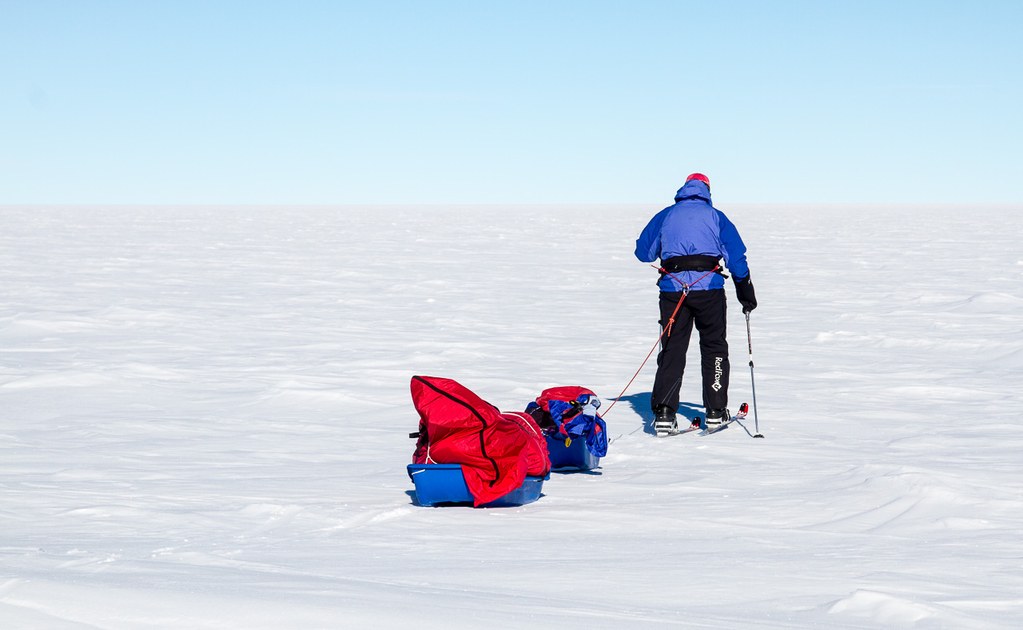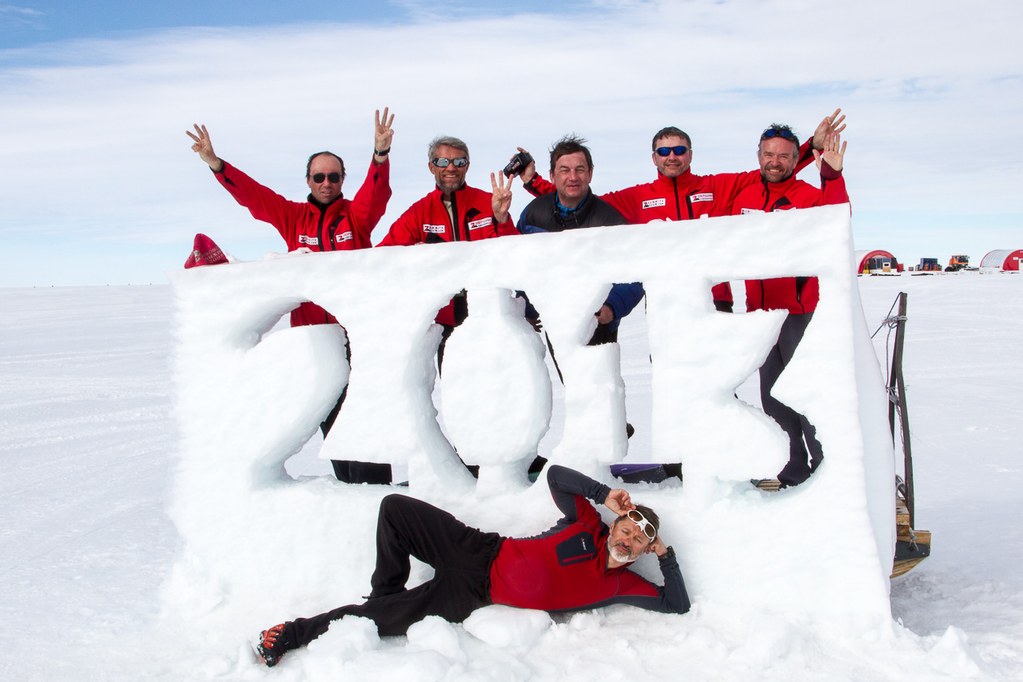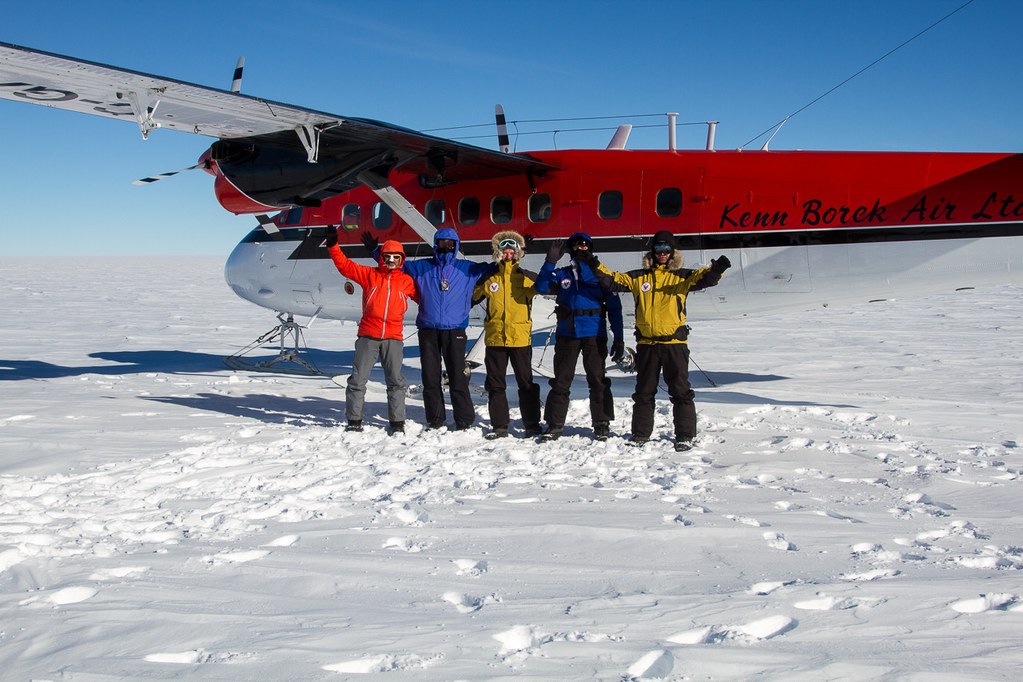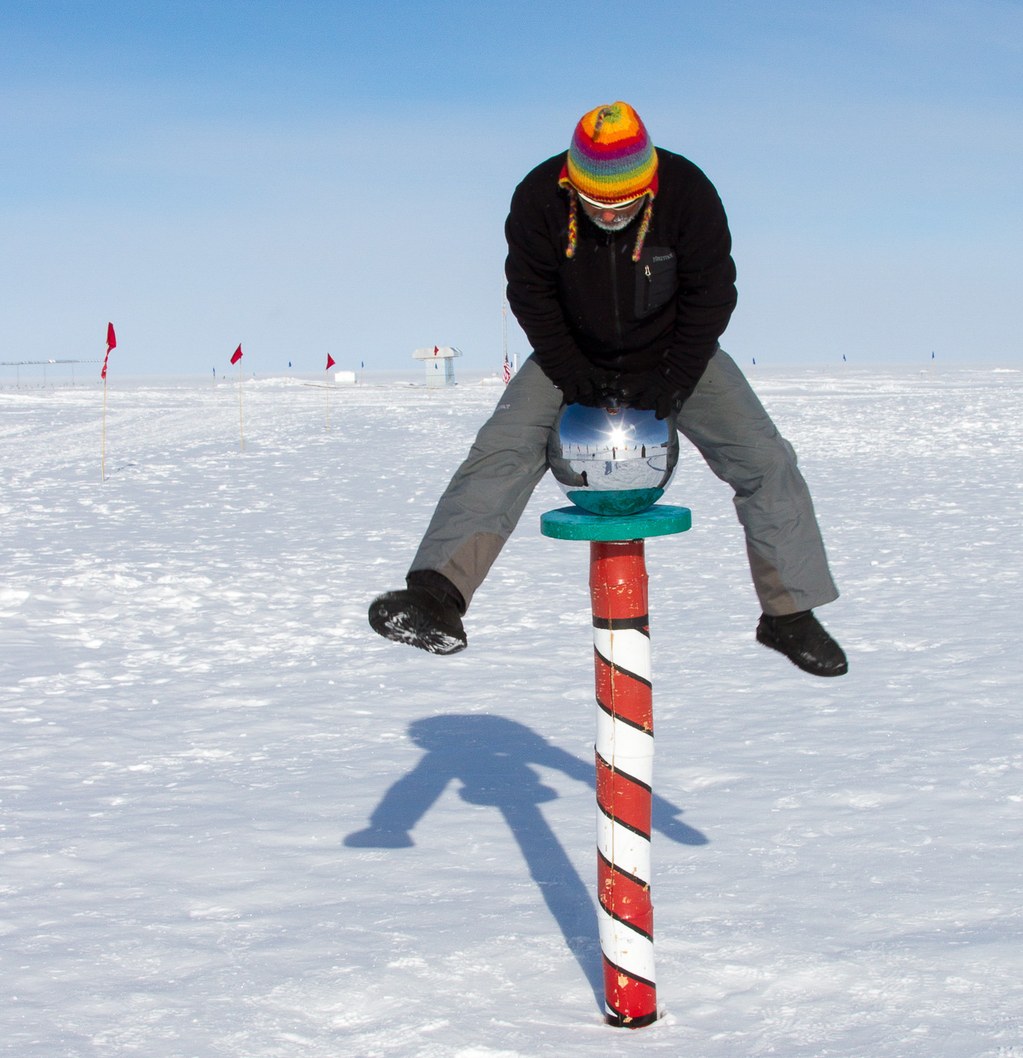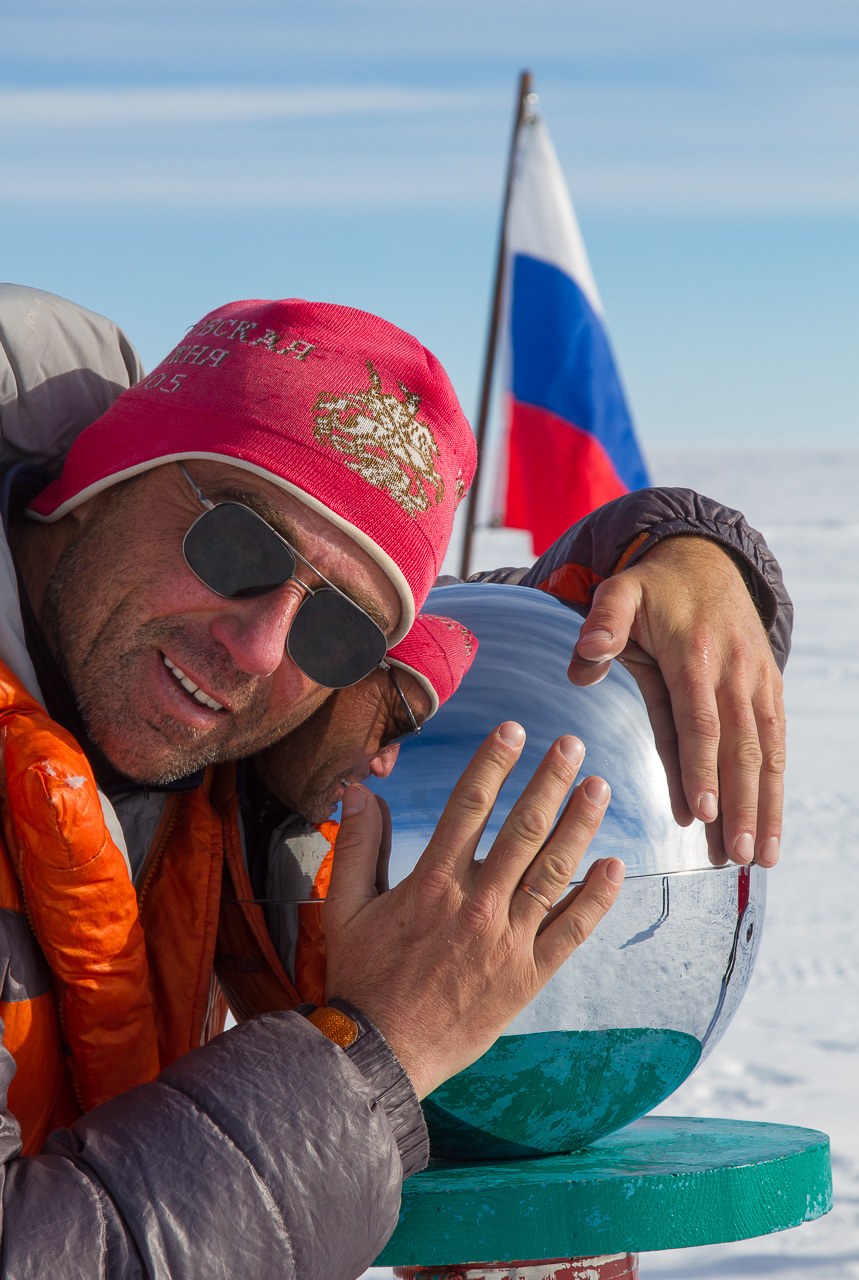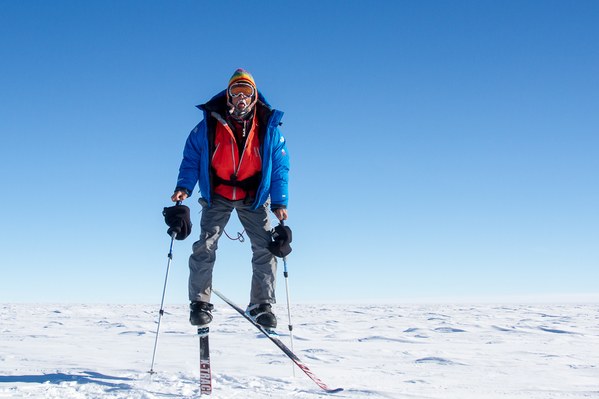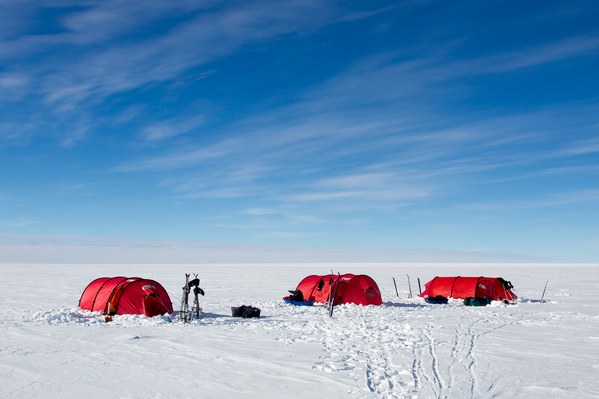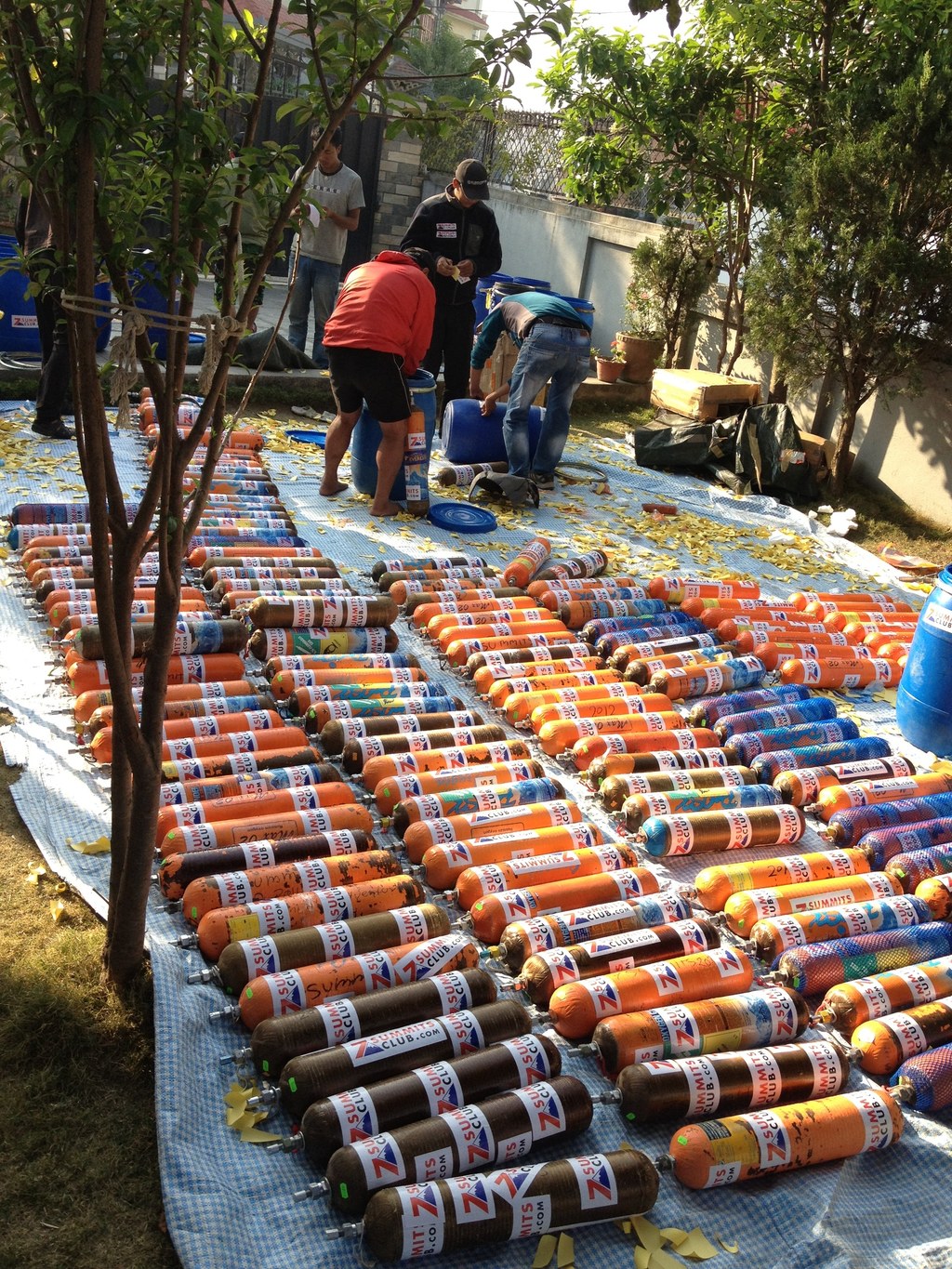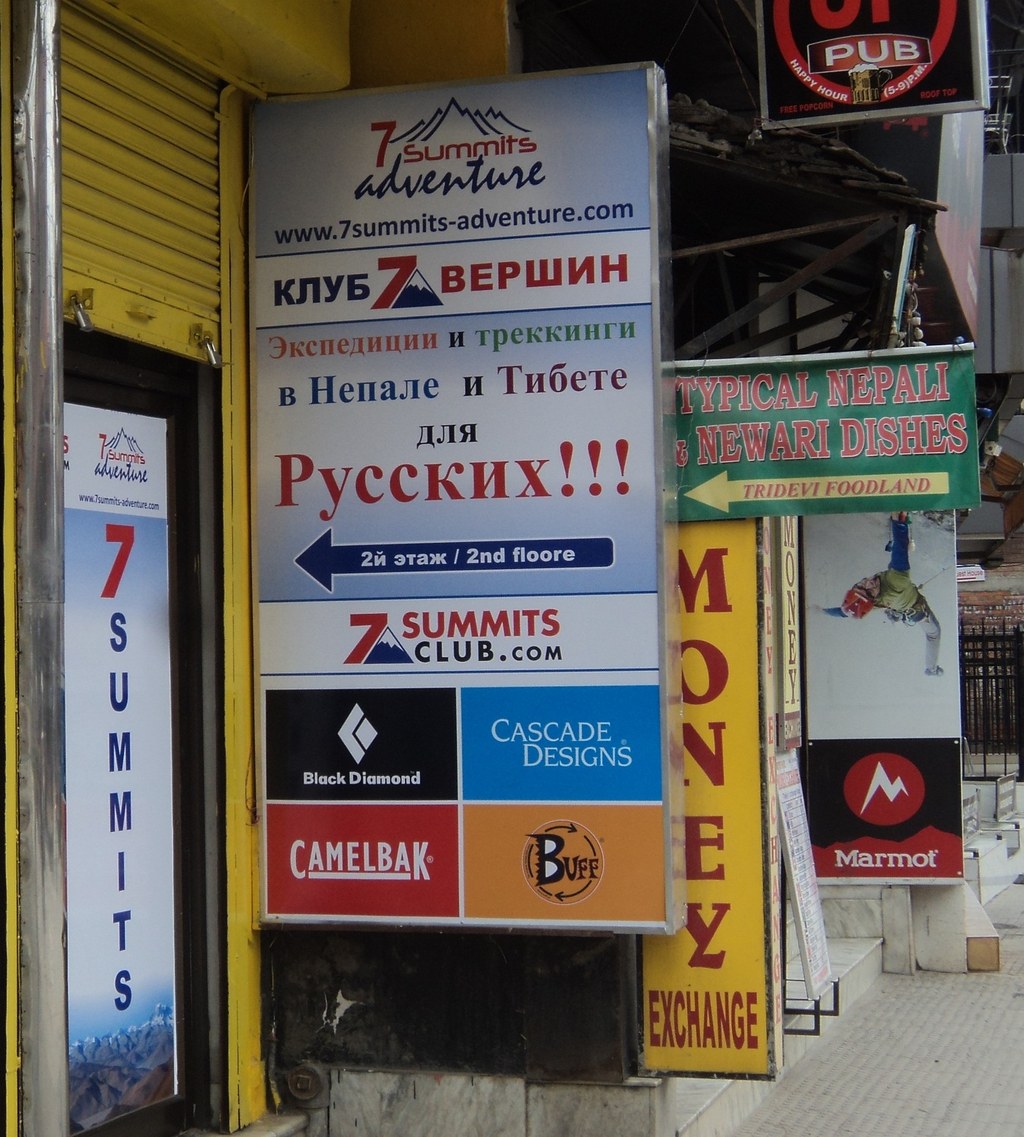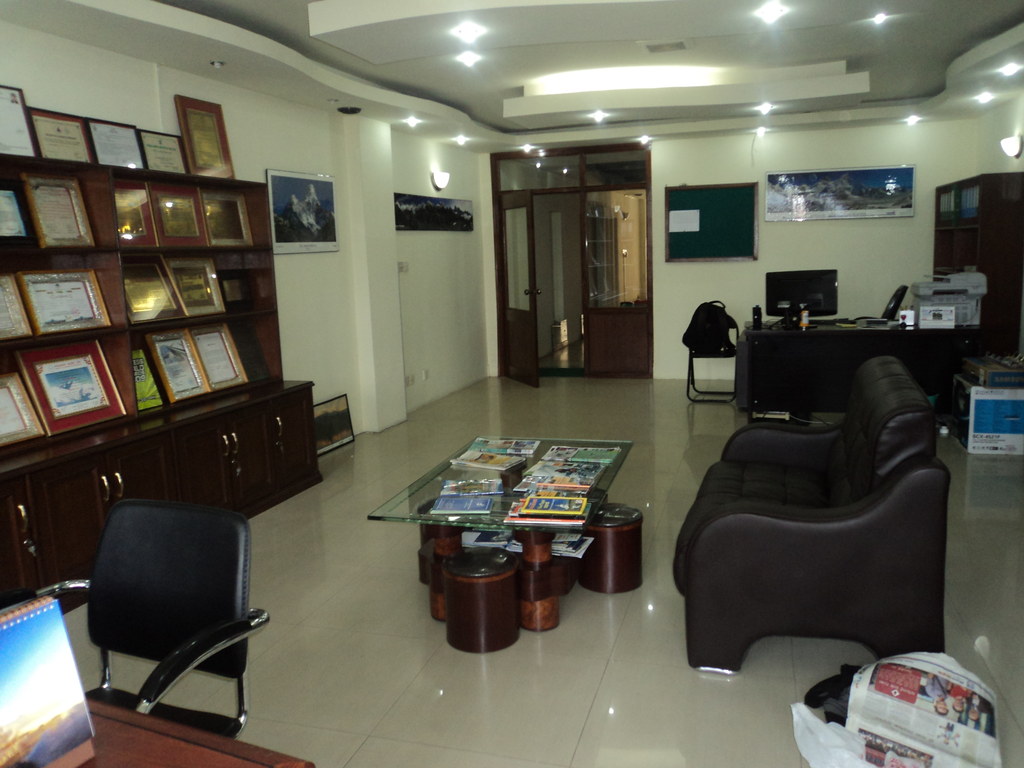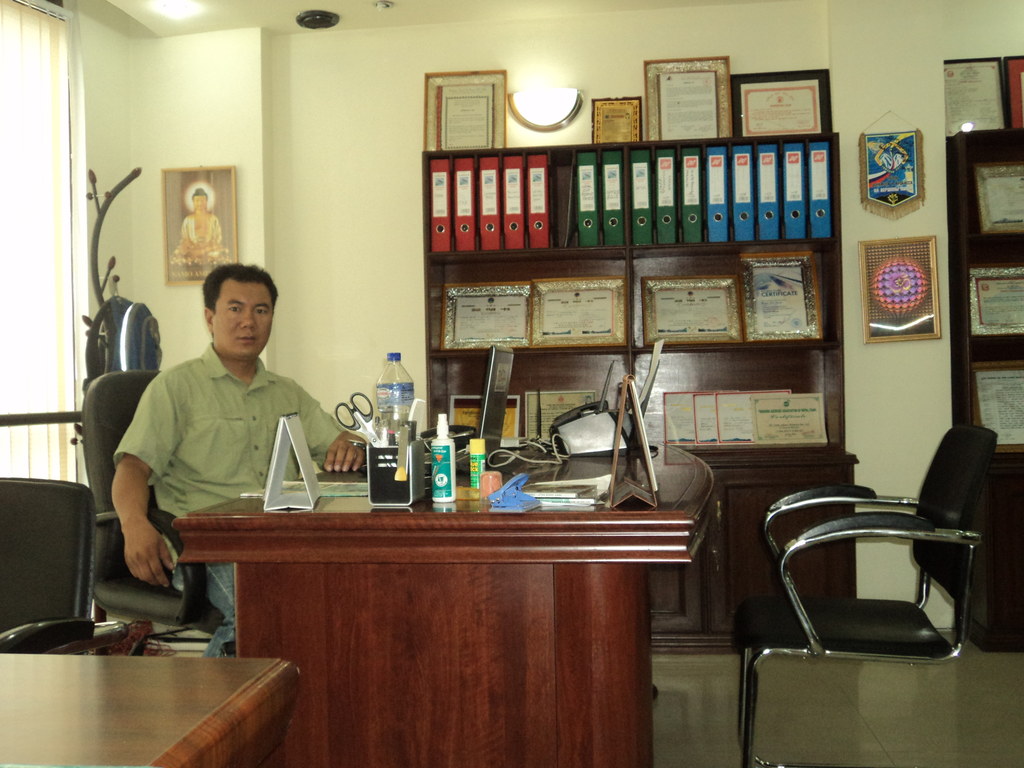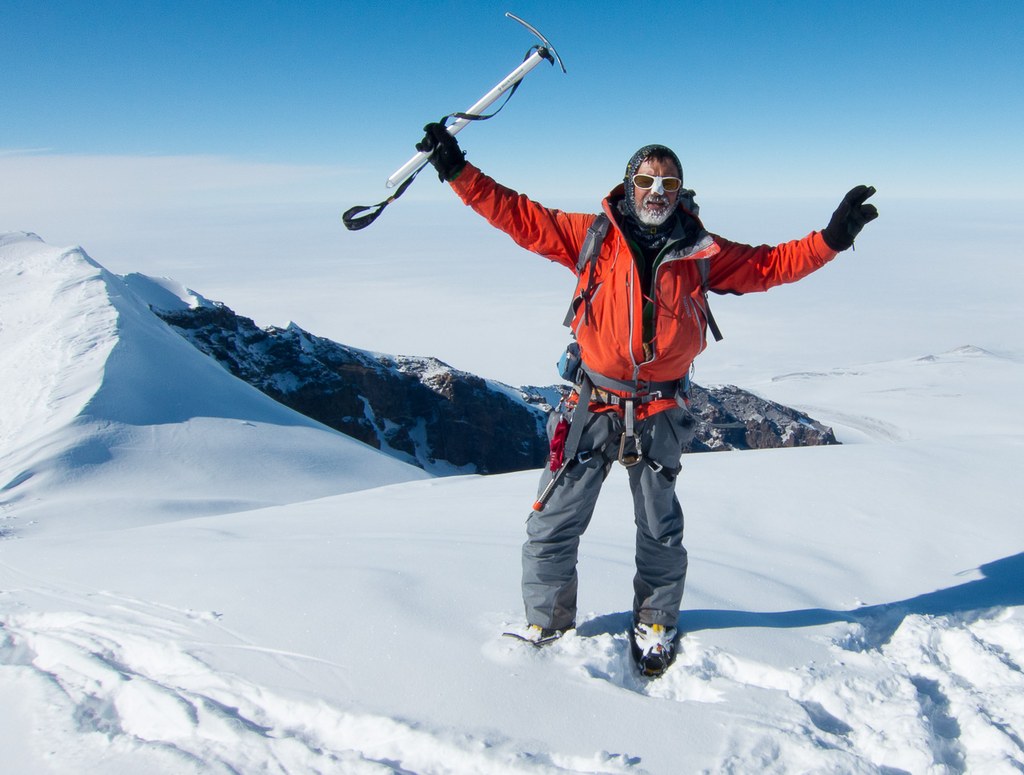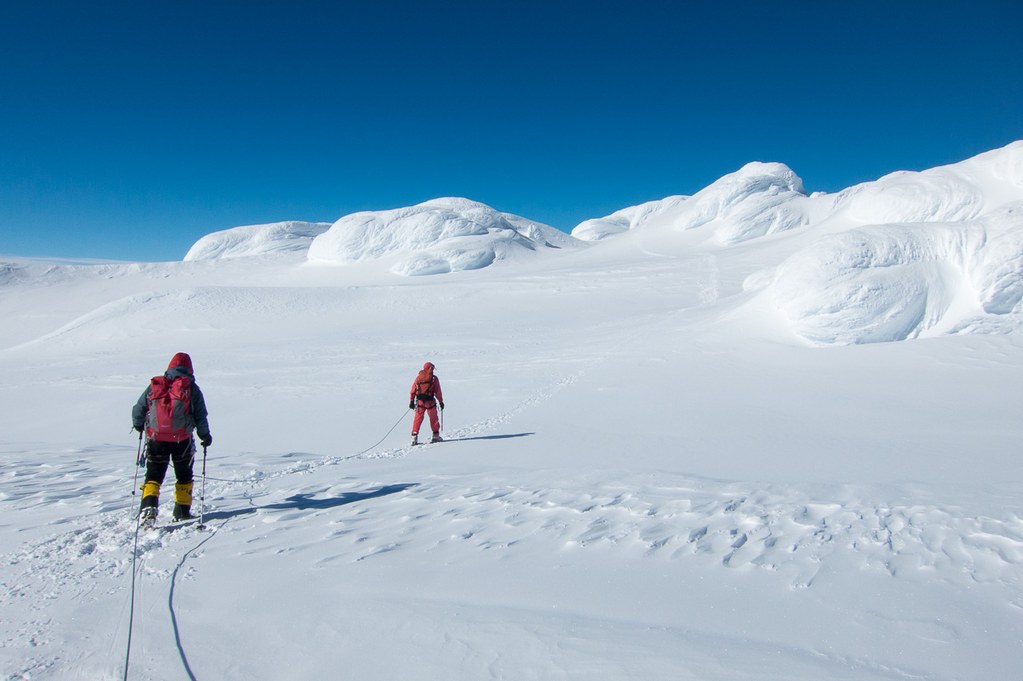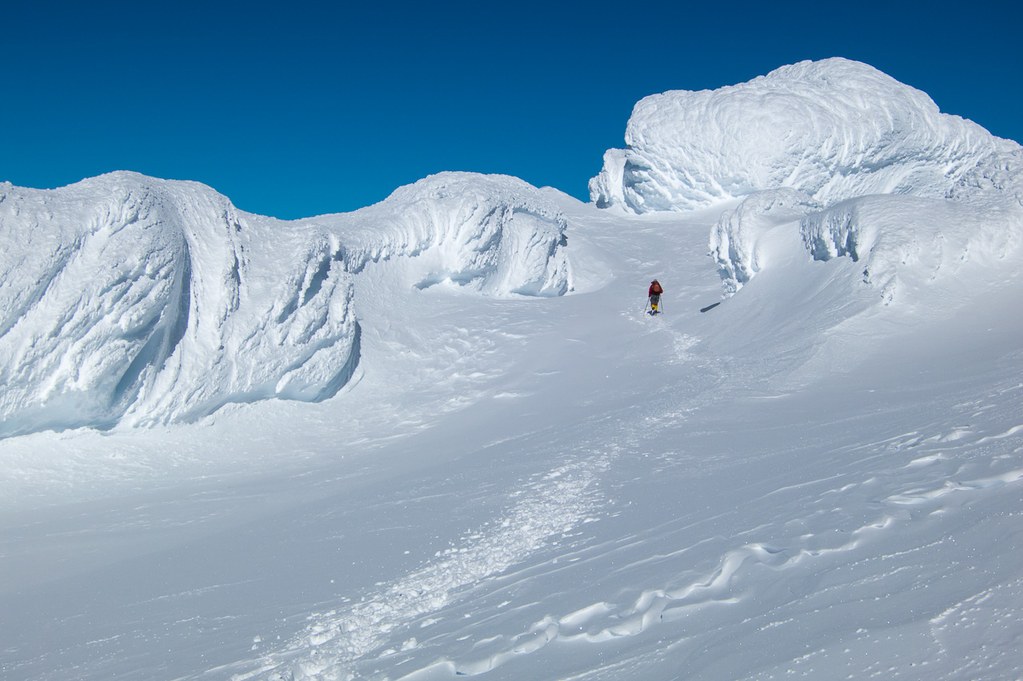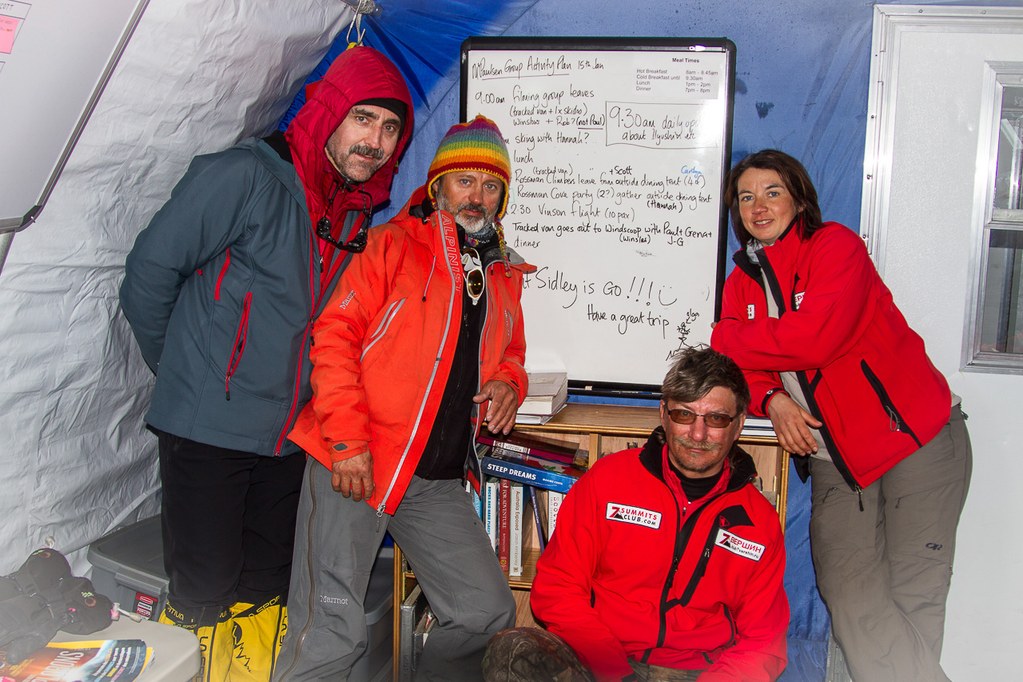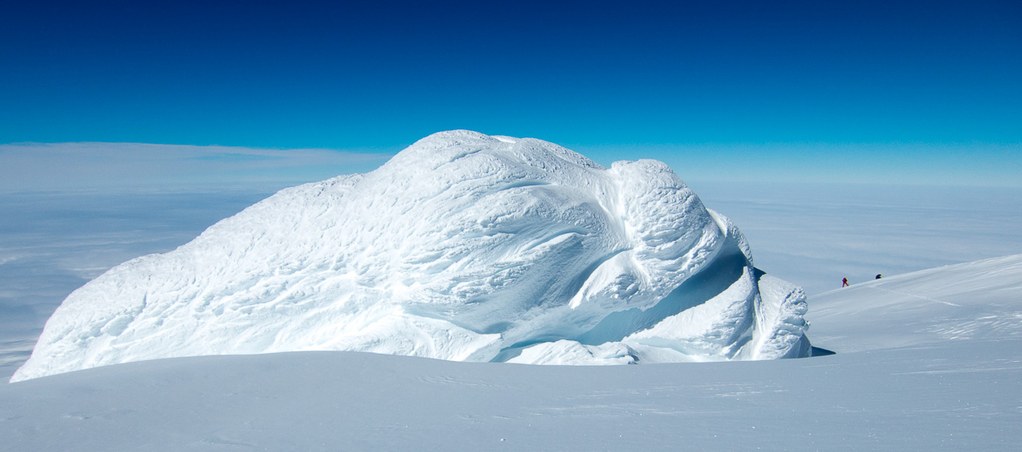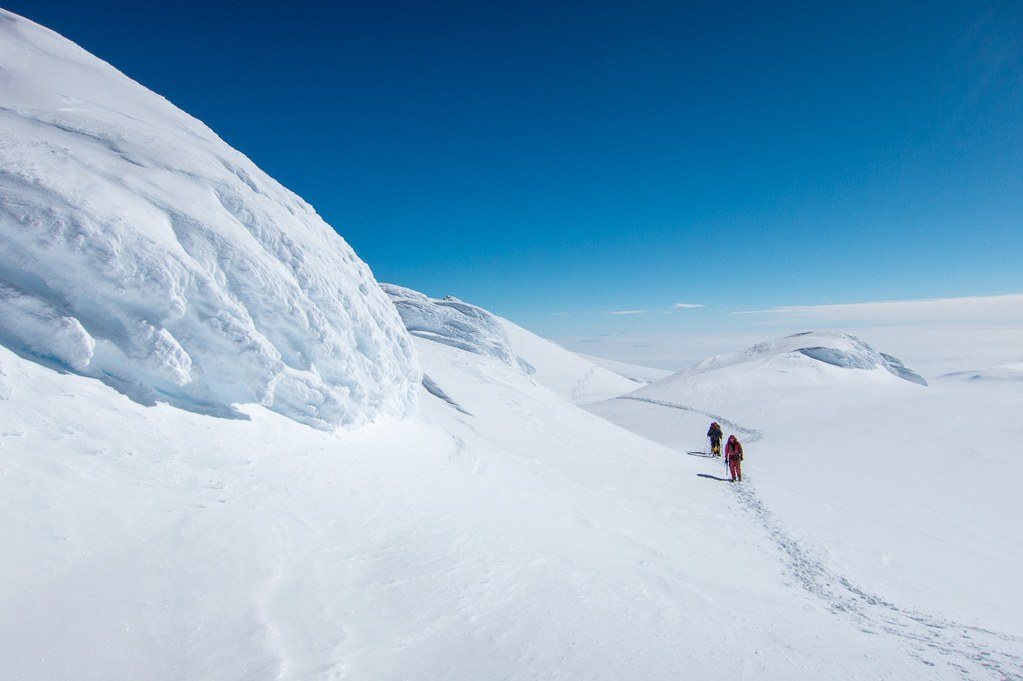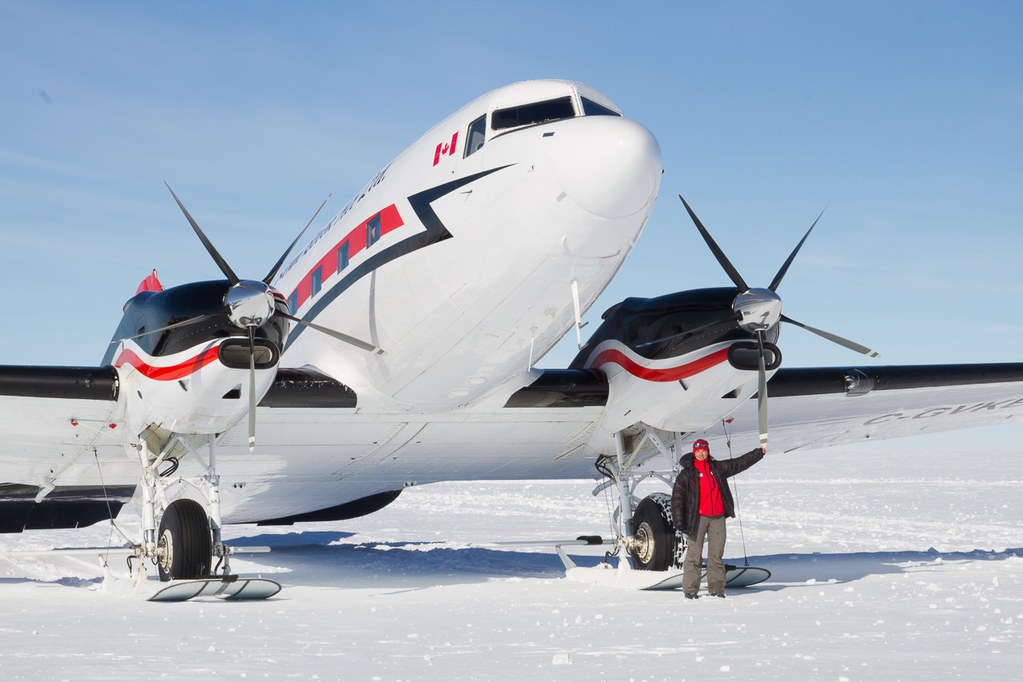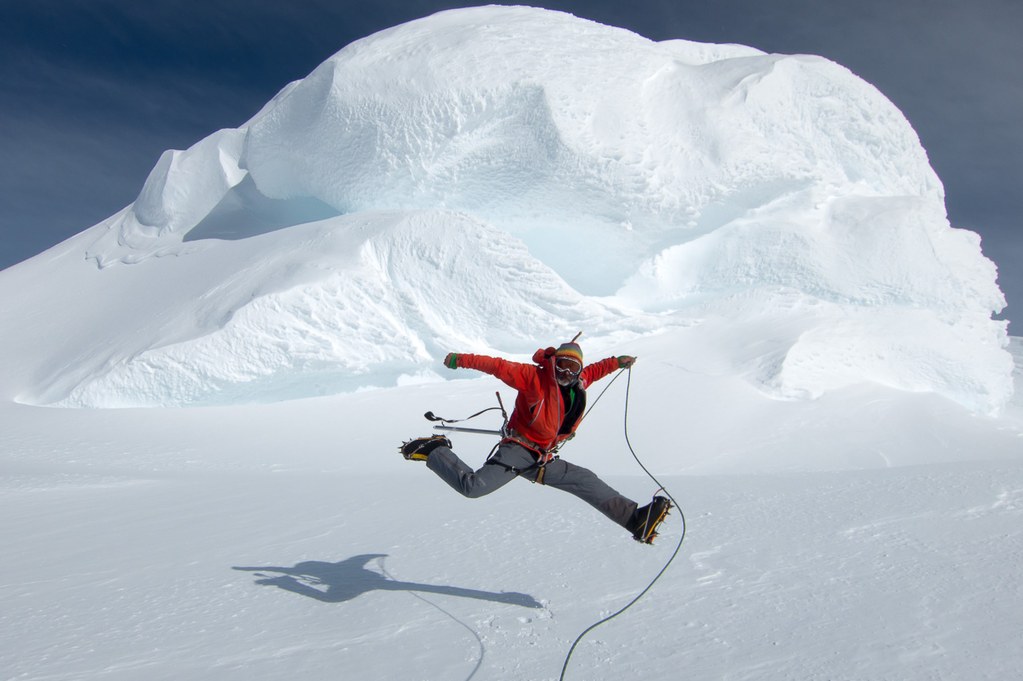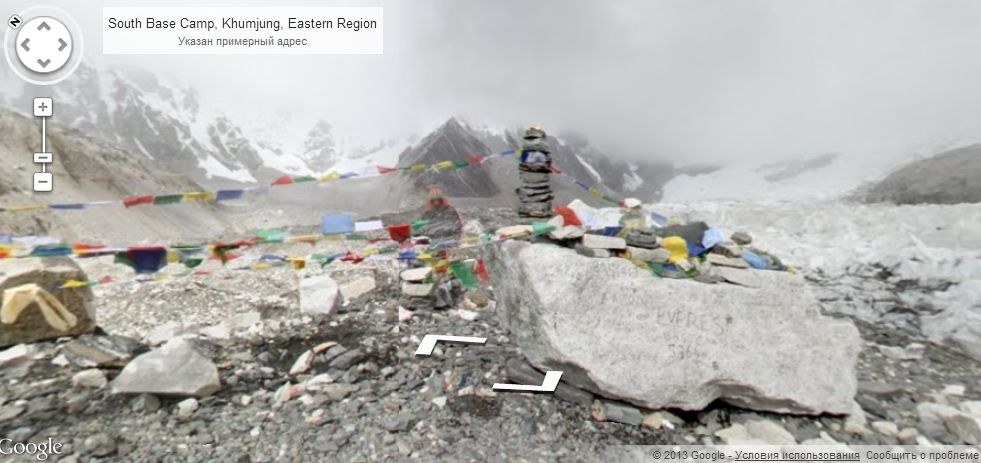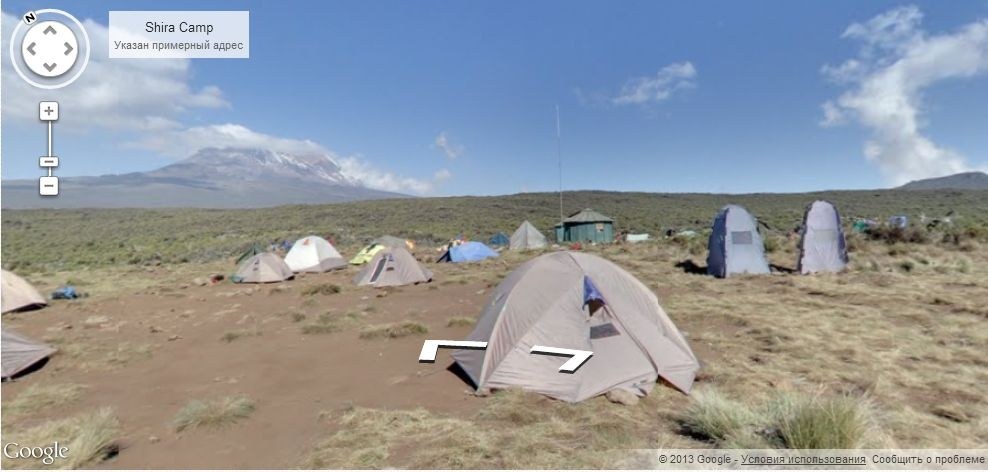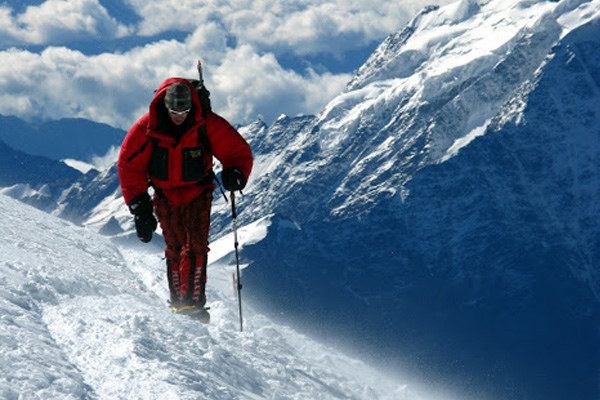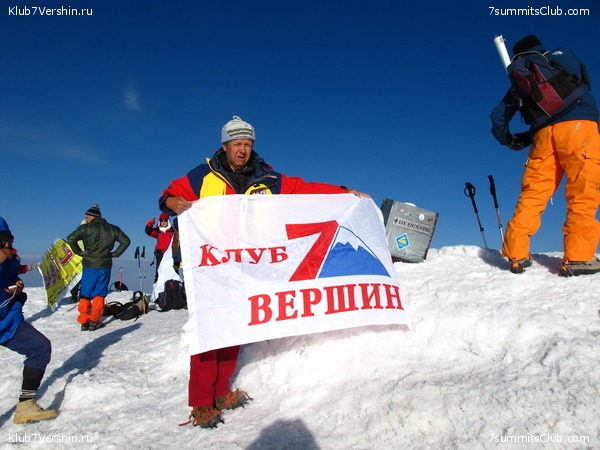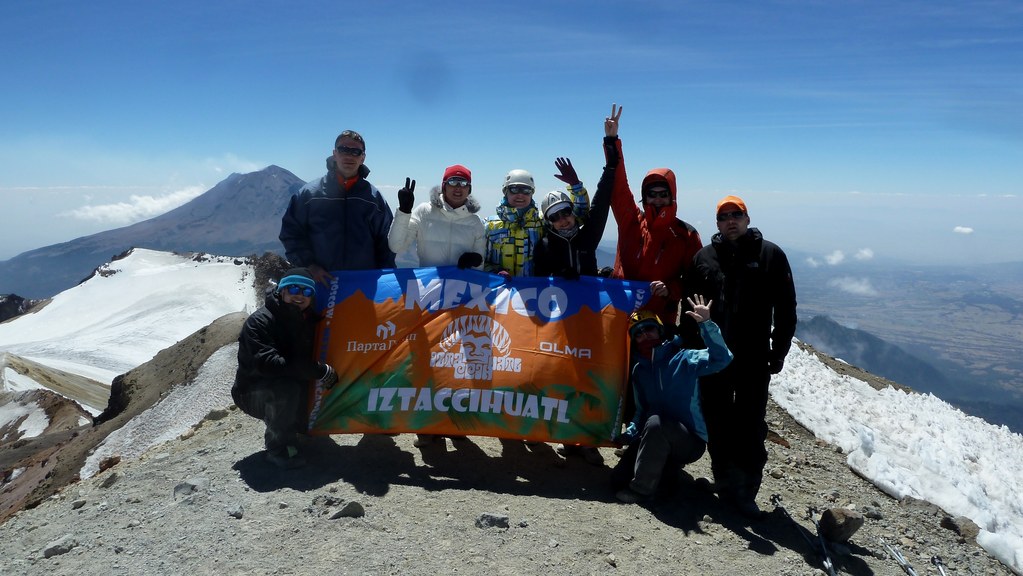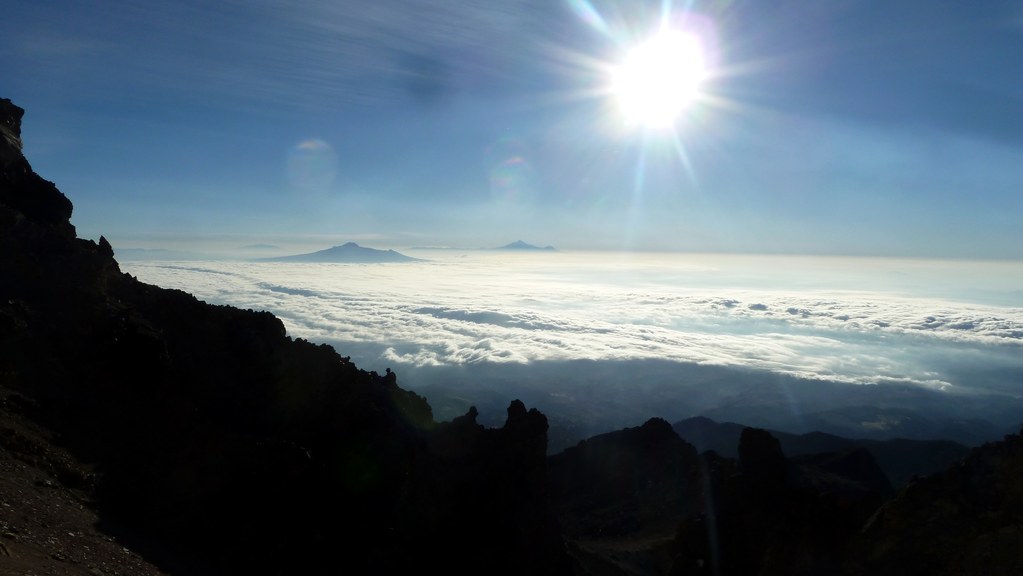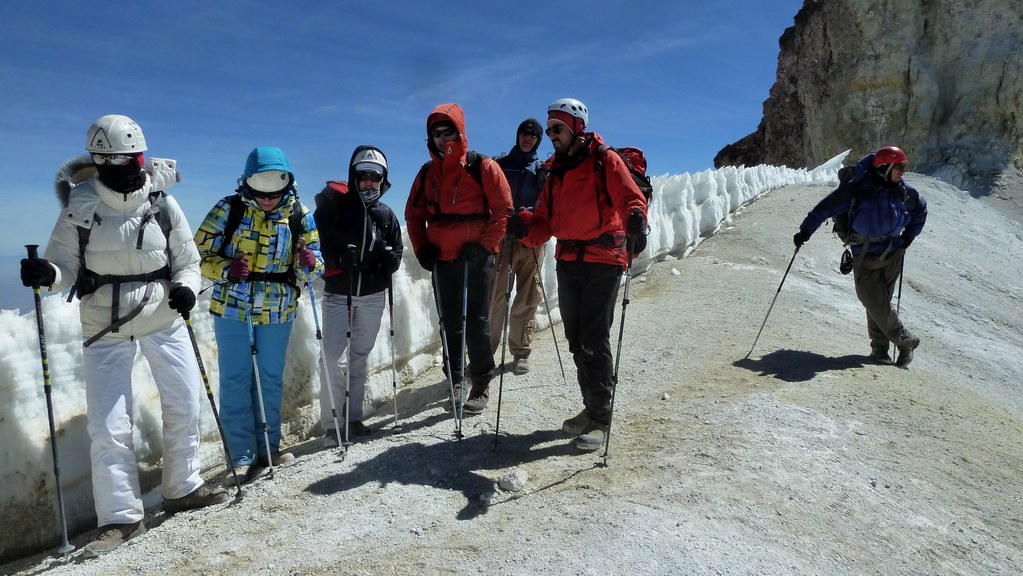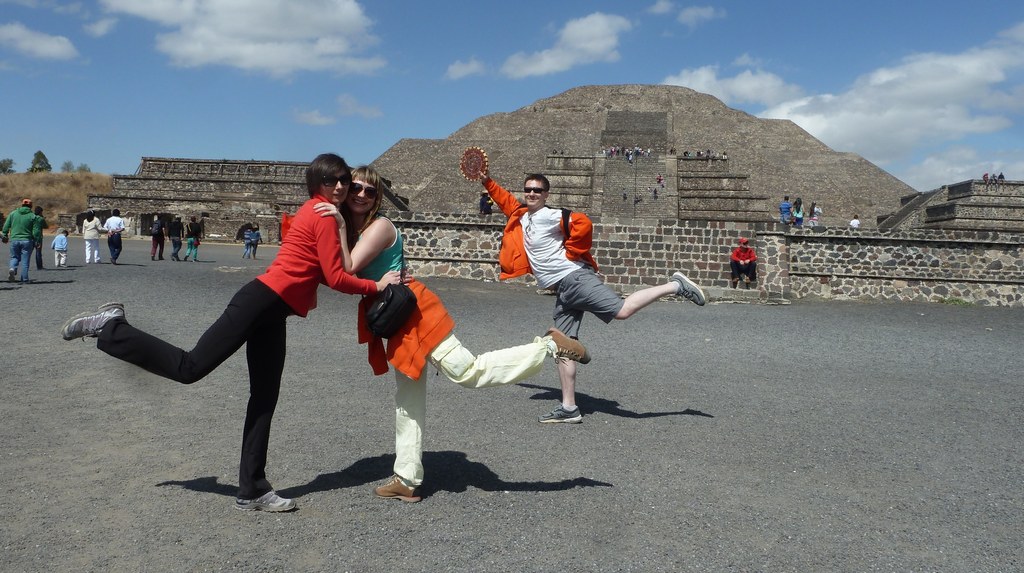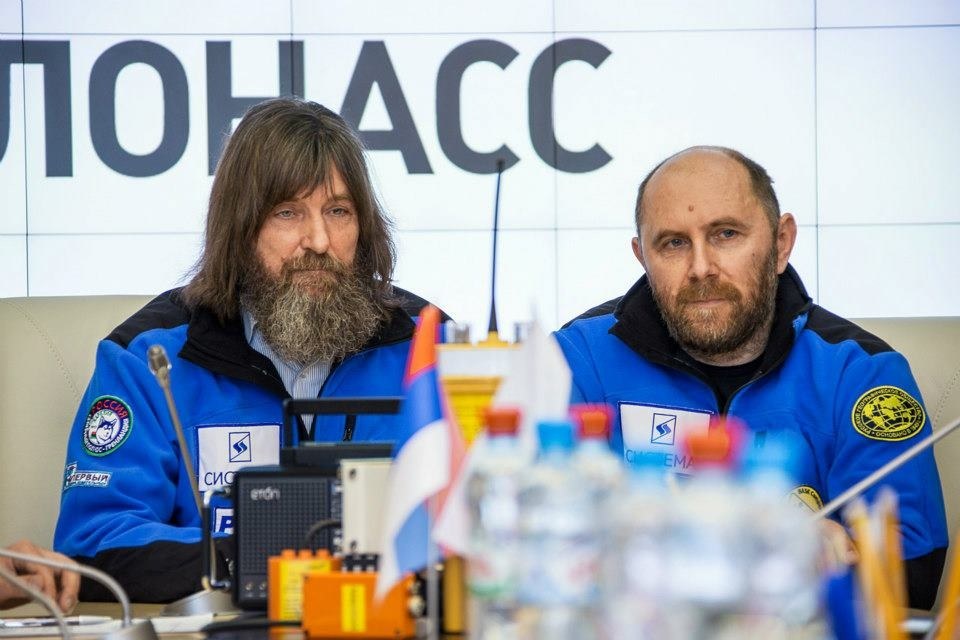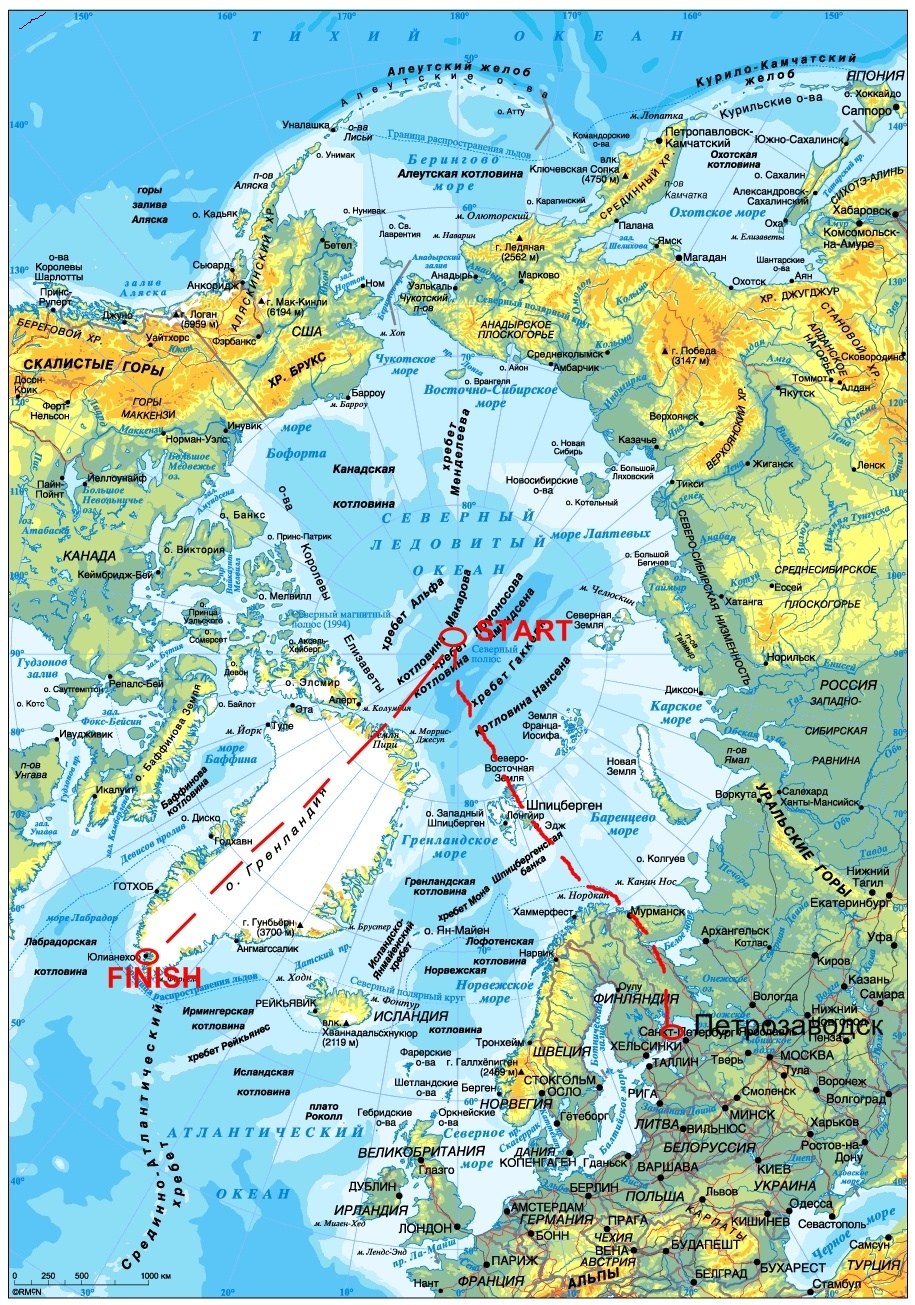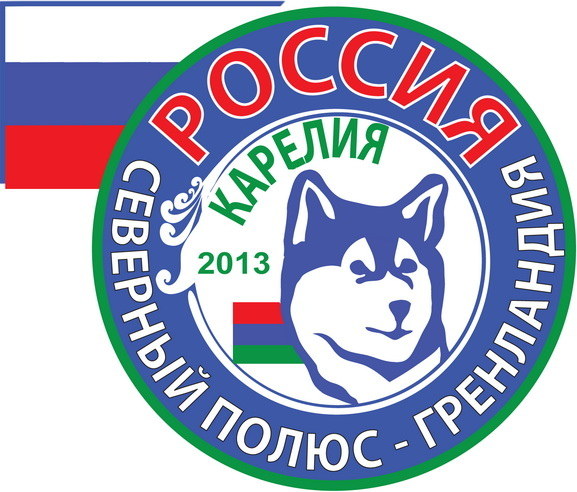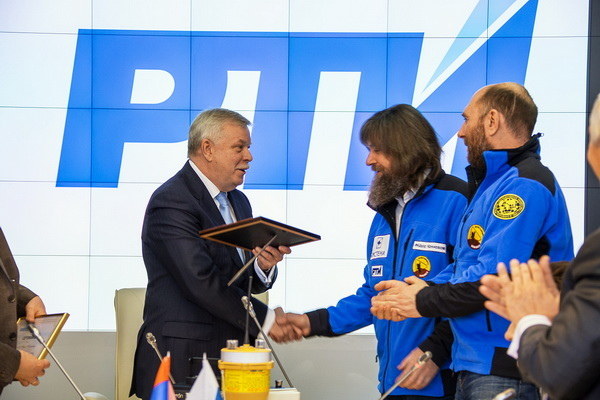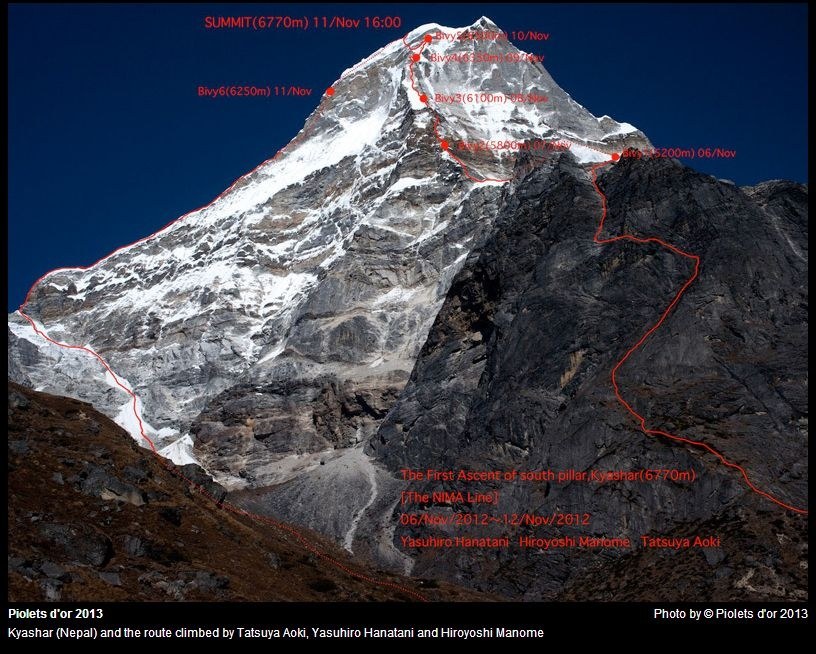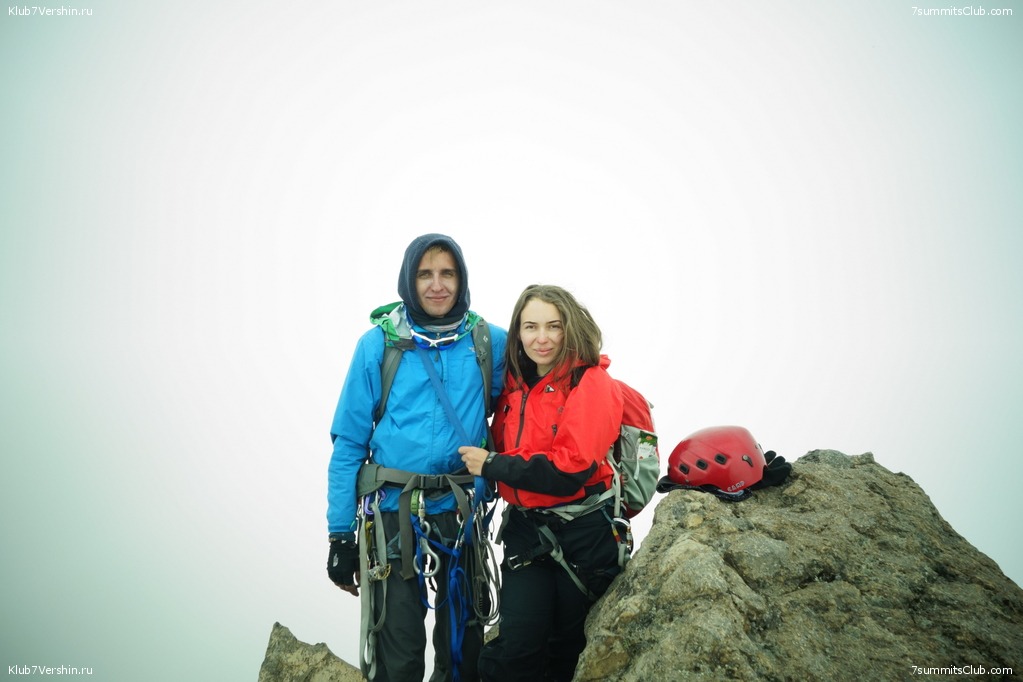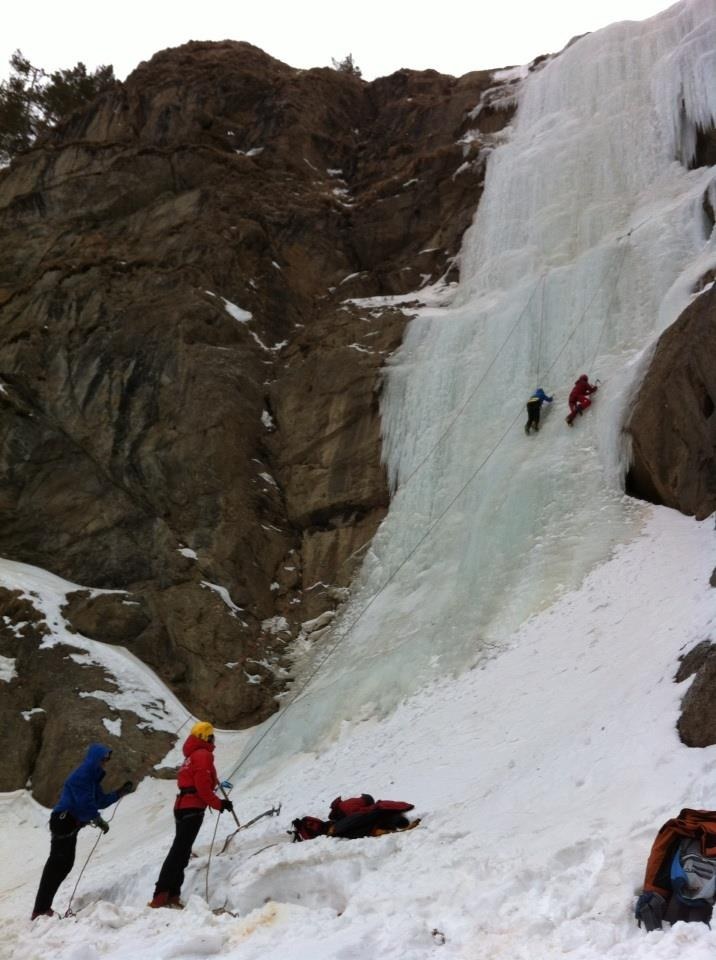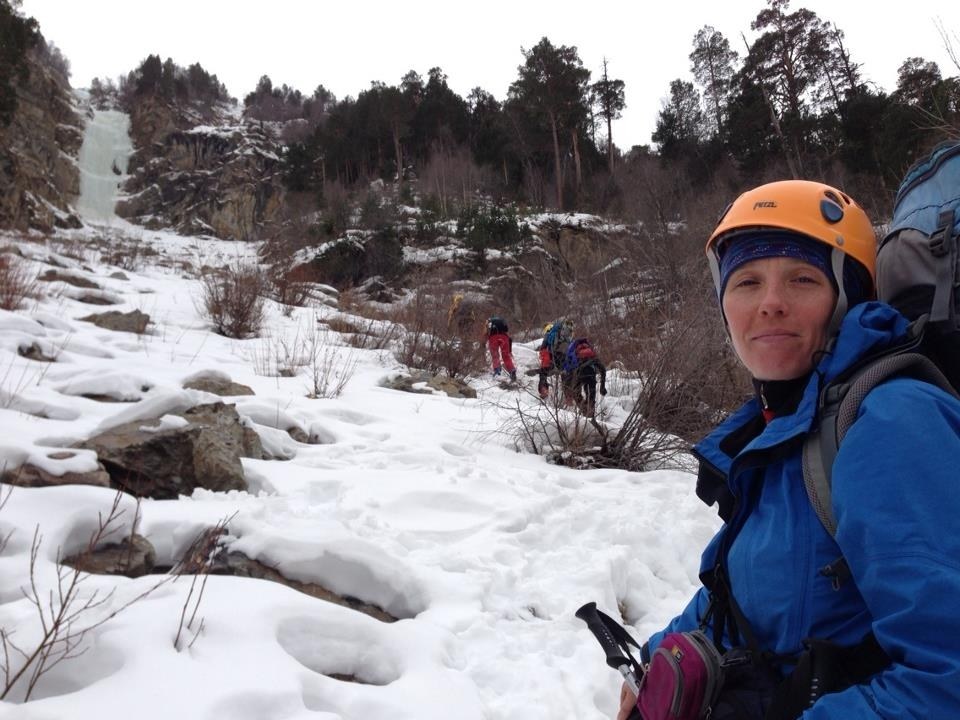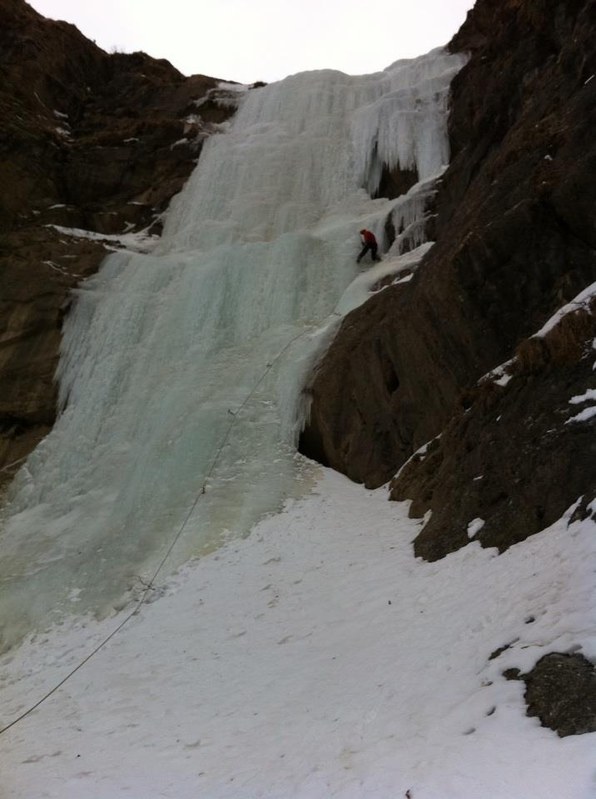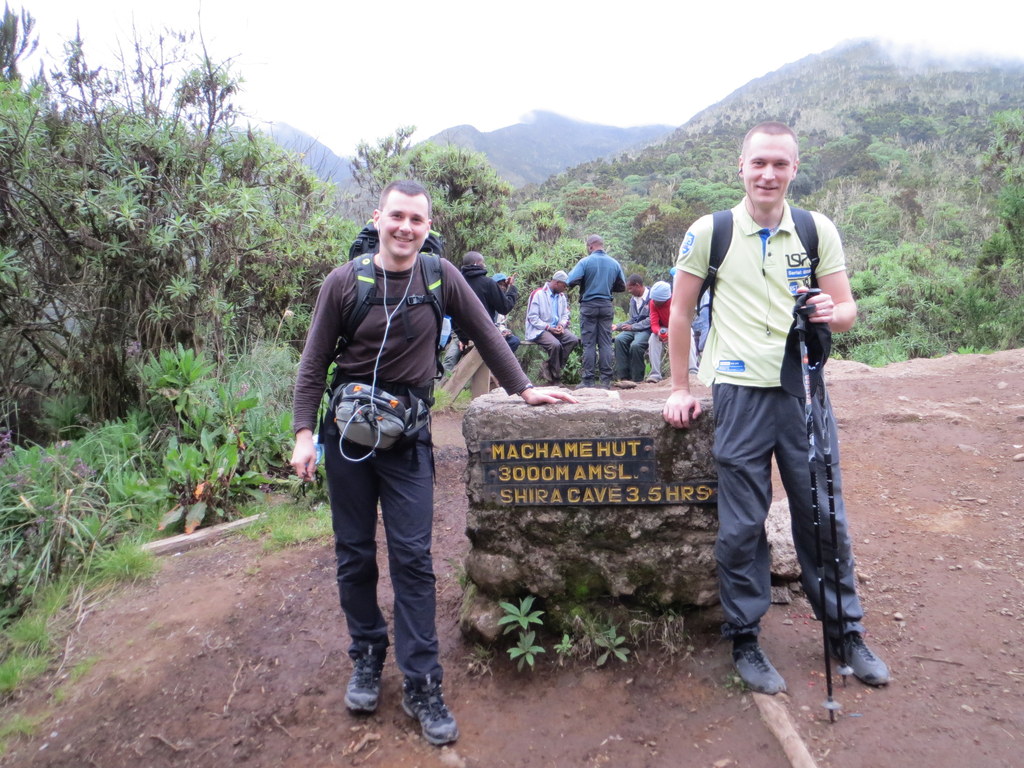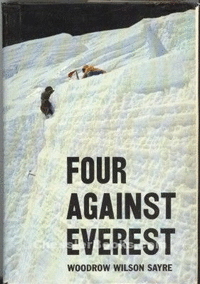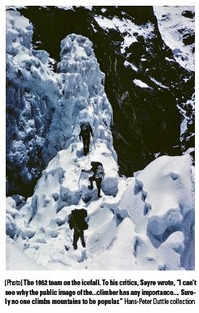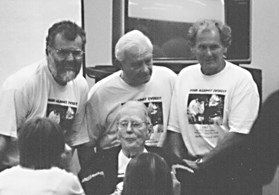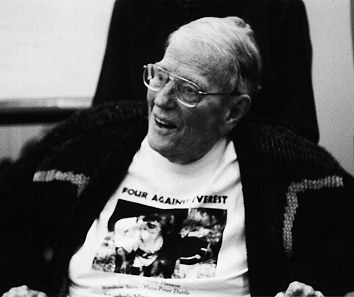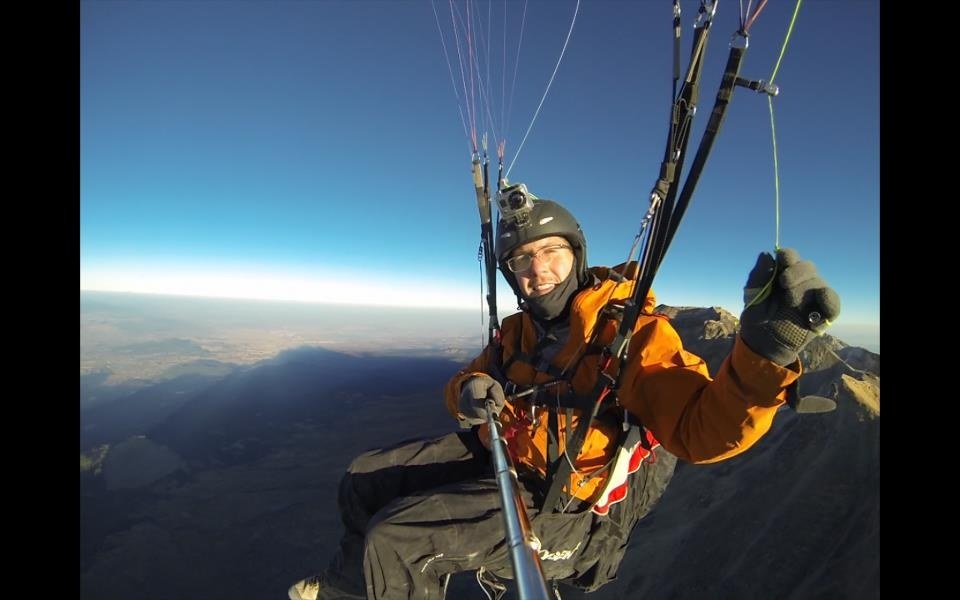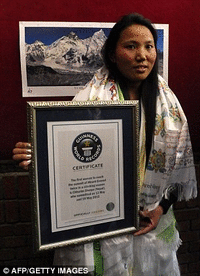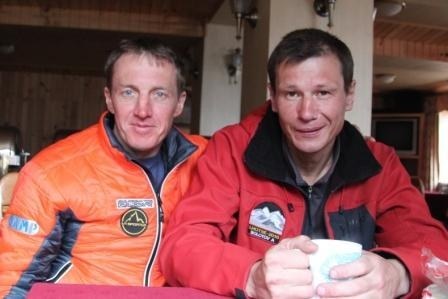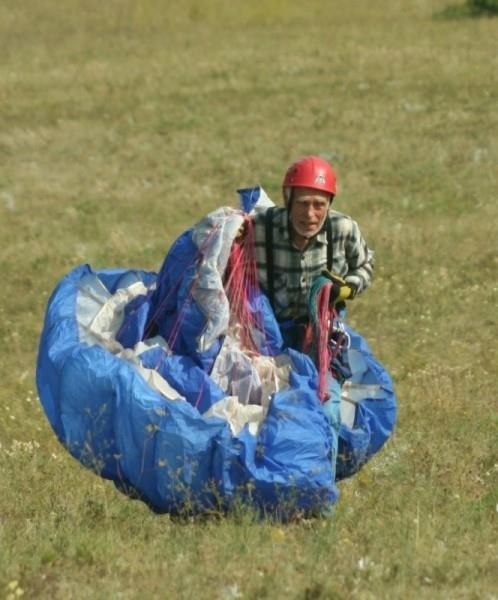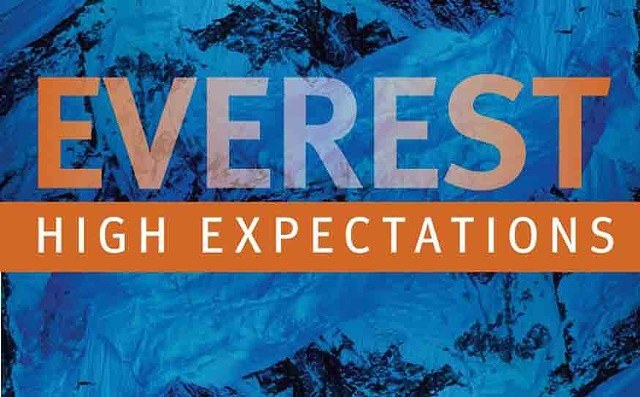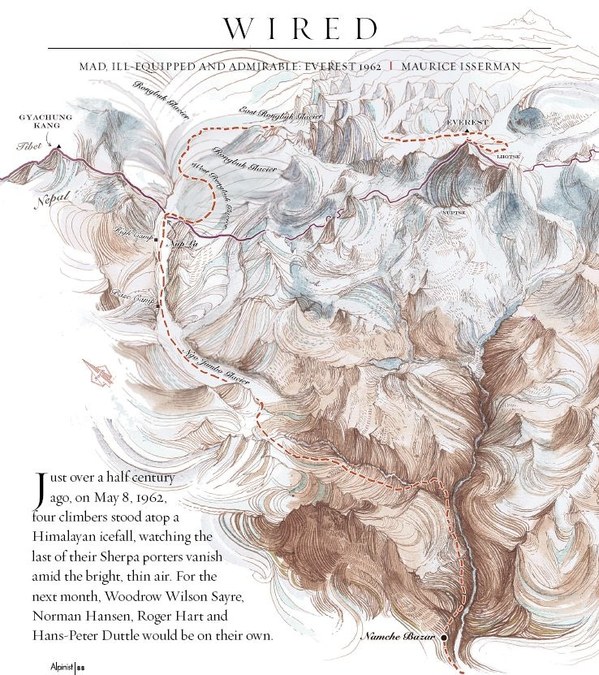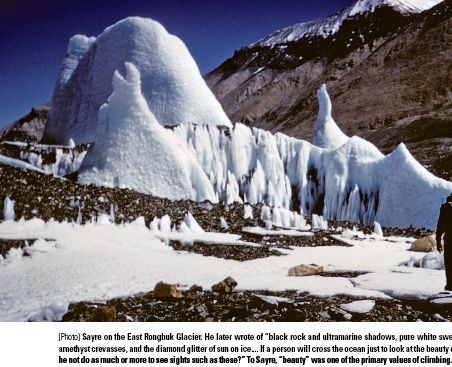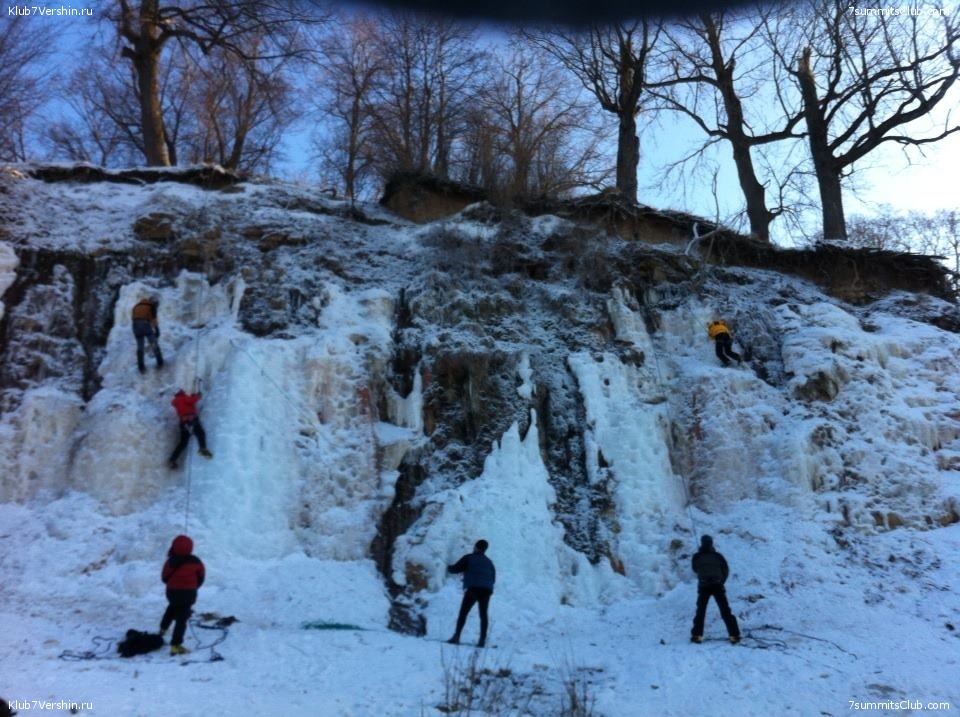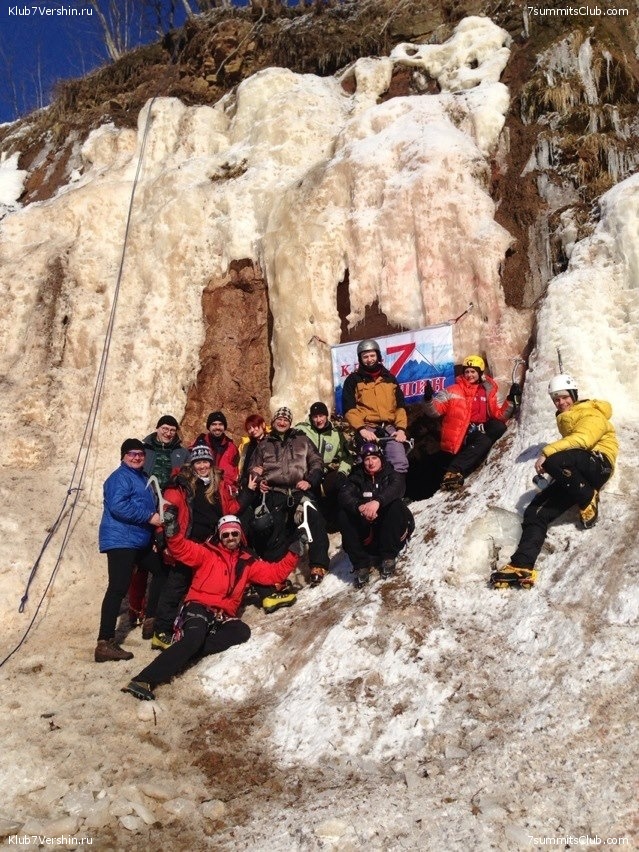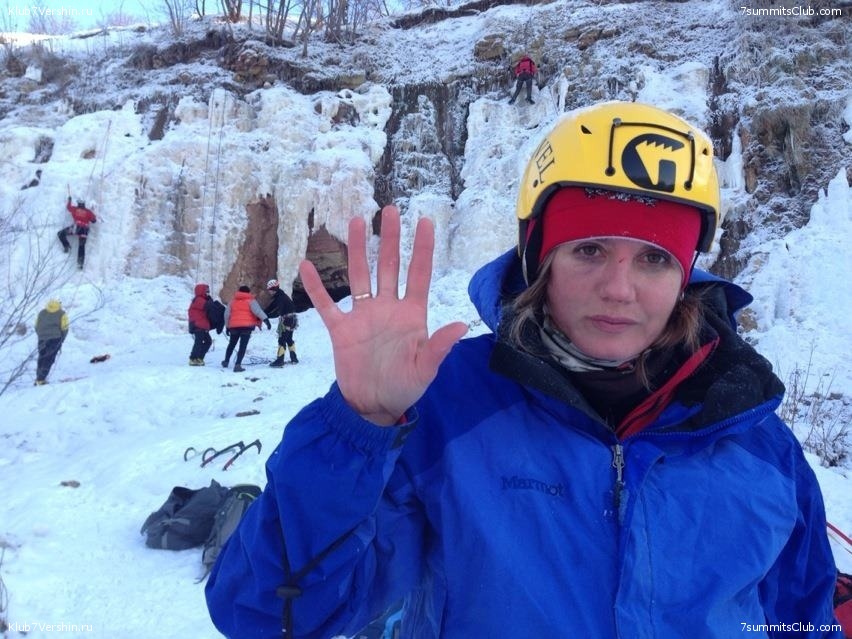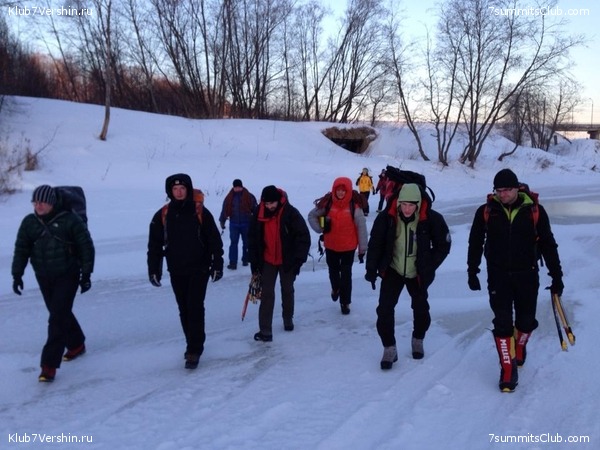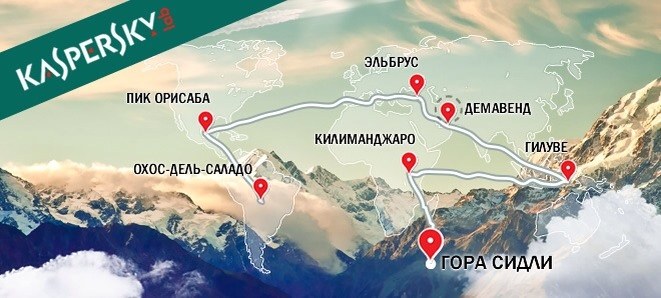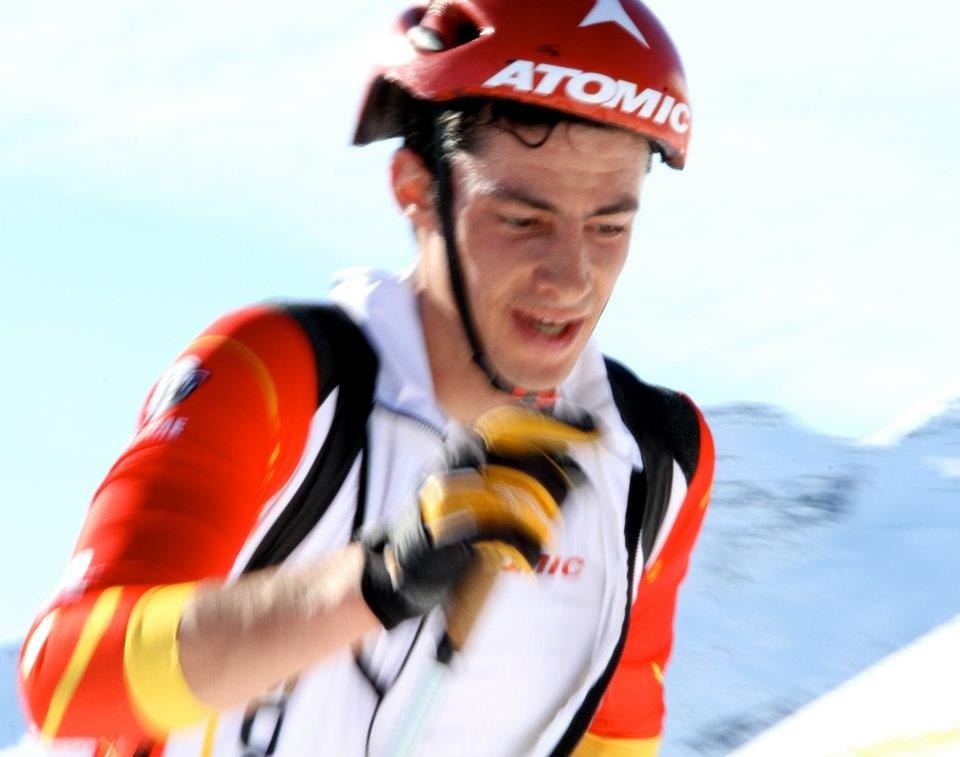All news: March 2013
James Wilde: MOVING MOUNTAINS, a book about seven summits and Global H2O
Everest.
MOVING MOUNTAINS: How the dream to climb the seven summits transformed in the charity Global H2O According to his publisher's site, Outskirts Press, the summary is as follows: Publication Date: February 12, 2013 Number of pages: 410 MOVING ...
MOVING MOUNTAINS: How the dream to climb the seven summits transformed in the charity Global H2O
According to his publisher's site, Outskirts Press, the summary is as follows:
Publication Date: February 12, 2013 Number of pages: 410
MOVING MOUNTAINS "The story of how my dream to climb the seven continental summits transformed into providing clean drinking water to the people of northernUganda. In 2010, I set out to climb Everest from the north side and to complete the seven summits (climbing to the summit of the highest peak on every continent). During my training in theHimalaya, I discovered the water crisis and it changed me. It was then in 2009 when I fell ill with dysentery onCho Oyu, forcing me to turn back on my attempt to reach the 6th highest peak on the planet. During the time I was sick, I encountered what most people without clean water experience on a regular basis. Upon my return home toMunich, I dedicated my climb of Everest to the water crisis and founded a 501(c)3 entity in theUSA. I focused an entire year of my life on reaching the highest point on the planet and creating an all-volunteer organization with the goal to provide clean drinking water to the people in northernUganda. What was originally a personal goal became a quest to deliver clean drinking water to the thirsty millions in war-stricken northernUganda. Through this story, the charity, Global H2O, was born." http://outskirtspress.com/moving_mountains/
James DeWitt Wilde V (born September 24, 1970) is an American sportsman, explorer and philanthropist living inMunich,Germany. On October 19, 2010, Wilde climbed Kosciuzsko inAustralia, completing his quest to climb the seven summits, becoming number 216 on the all-time Kosciuszko list.
Currently, James is working on the restructuring project of a major telecommunications operator inAngola, originally as the Head of the Finance Team and now the Executive Director of Strategy.
Apart from his native language, English, James speaks German, Portuguese, French and Russian. James has an MBA in International Business and Finance and Bachelor degrees in Journalism/Marketing as well as Business Administration.
James founded the charity Global H2O in 2009, helping to establish a means to bringing clean drinking water and developmental progress to theNorthern provincesof worn tornUganda. Since its inception, James has worked tirelessly to help the needy in his free time and most notably has completed the book, MOVING MOUNTAINS, documenting this amazing journey.
Wilde's seven summits
Aconcagua, 12/01/2006
Elbrus, 30/04/2003
Everest, 23/05/2010
Kilimanjaro, 04/11/2002
Kosciuszko, 19/10/2010
McKinley, 02/07/2004
Vinson, 02/01/2009
On Everest
Jim has participated in two expeditions 7 Summits Club on Everest. In the first one, in 2005, he could not reach the top. But he got a lot of Russian friends and a new name - "Dikiy", which appeared only as a translation of his surname. Then, in a warm international company of 7 Summits Club, headed by Lyudmila Korobeshko and Sergey Kofanov, Jim met new 2009 inAntarctica. Then he climbed to the top of the Mount of Vinson. And in 2010, he managed to make the main dream - to climb Everest. It happened on May 23, in the company of Noel Hanna, Steve Berry, Mikhail Turovsky, Andrey Filkov, Sirdar Mingma and four other Sherpas.
Everest expedition 2010
Site of James
Global H2O
!
http://www.facebook.com/GlobalH2O.org
The best pictures from the South Pole
South Pole.
Pictures from Vitaly Simonovich, who this year climbed Mount Vinson, Mount Sidley and made Last Degree to the South Pole. Real master of photo ! ...
Pictures from Vitaly Simonovich, who this year climbed Mount Vinson, Mount Sidley and made Last Degree to the South Pole. Real master of photo !
7 Summits Adventure Company is preparing for the start of new season, for our giant expedition on Everest
In two days Alexander Abramov will fly to Nepal to Kathmandu to do on-site preparation for the great expedition of 7 Summits Club on Everest. This will be the 10th in a row, that is, the jubilee expedition, it will join a record number of ...
In two days Alexander Abramov will fly to Nepal to Kathmandu to do on-site preparation for the great expedition of 7 Summits Club on Everest. This will be the 10th in a row, that is, the jubilee expedition, it will join a record number of participants. 27 clients and 5 guides will be at the base camp at Rongbuk Glacier. Our subsidiary 7 Summits Adventure Co has been involved in the preparation of the season.
In the expedition of 7 Summits Club 13 members will climb with permits for the summit of Everest, 4 guides will work with them, 7 pax have permits for Changtse, 2 – for North Col (1 guide), 6 persons have the right to go up to camp ABC.
Besides the main ascent, Alexander Abramov plans to re-try a new route: traverse Changtse - Everest.
Generally 7 Summits Club sends toNepalthree large groups: forIslandPeak, for MeruPeakand for the classic trekking to Everest base camp.
We added new photos from expedition on the mountain Sidley
Sidley.
Vitaly Simonovich – one of the most active members of the 7 Summits Club. This winter (in Antarctica it was summer) he climbed onMount Vinson, reached the South Pole (Last degree) and climbed the highest volcano of Antarctica Mount ...
Vitaly Simonovich – one of the most active members of the 7 Summits Club. This winter (in Antarctica it was summer) he climbed onMount Vinson, reached the South Pole (Last degree) and climbed the highest volcano of Antarctica Mount Sidley. Hat trick! Now Vitaly collects things for the expedition on Everest. For June he plan a trip for Mac-Kinley. And further: Carstensz, Cosczushko andFuji. So, we will wait for new wonderful photos. Especially from Everest. Good luck, Vitaly!
The largest ever collection of photos fromOjos del Salado
Ojos del Salado.
The expedition of 7 Summits Club under the leadership of Denis Savelyev was completed in early March, when the participants returned home. It was quite successful, the topOjos del Saladowas reached by 4 climber and one guide. This season is ...
The expedition of 7 Summits Club under the leadership of Denis Savelyev was completed in early March, when the participants returned home. It was quite successful, the topOjos del Saladowas reached by 4 climber and one guide.
This season is generally was with very bad weather there, so the victory was not easy. Half of expeditions cancelled climb because of the strong wind ...
On he top of Ojos del Salado were:
Yuri Lukyanov,
Nadezhda Lukyanova,
Lily Bogucharova,
Alexander Utvenko,
Guide Denis Saveliev.
Ivan Lukasiewicz and Irina Salova little reached the top.
Today we publish a large (huge) collection of photographs from the expedition - 158 pictures
7 Summits from Google Maps
Kilimanjaro.
Google has been doing a lot to make Google Maps more about exploring the world, including places few will ever be able to see with their own eyes. Today, the company announced that it has added more locations to Maps, including Street ...
Google has been doing a lot to make Google Maps more about exploring the world, including places few will ever be able to see with their own eyes. Today, the company announced that it has added more locations to Maps, including Street View-style access to some of the highest peaks in the world.
Via the official Google Blog, the company revealed the introduction of new Street View features for some of Earth’s most celebrated mountains, including Everest, Mount Elbrus, Aconcagua and Kilimanjaro. They belong to the famous Seven Summits, an elite collection of the highest mountains on each continent. You don’t even have to acclimatize to high altitudes to check out these locations on Google Maps.
There’s a lot of detail in the virtual tours you can take of these peaks, including images of base camps set up by actual explorers. Google set out with a fisheye lens and lightweight tripod to capture the images, and will be detailing the whole expedition in a Google+ Hangout which is set to kick off at 10 AM PT today.
Google has been doing a lot to build out some amazing views of the more remote corners of the world, including its recent introduction of Street View tours of the Grand Canyon, Antarctica and other far-flung locations. Google’s remote tourism is actually an incredibly cool way to attract eyeballs to the Maps product, while helping the company build out an even more comprehensive database than it already has.
---
Aconcagua. Summit
Everest. Base camp
Kilimanjaro. Shira camp
http://maps.google.com/intl/en/help/maps/streetview/gallery/the-worlds-highest-peaks/shira-camp.html
Elbrus. Barrels Refufe
http://maps.google.com/intl/en/help/maps/streetview/gallery/the-worlds-highest-peaks/shira-camp.html
Your day job, not to mention fitness level, will probably keep you from ever ascending the mightiest peaks on Earth. Don’t worry. Google’s done the hard work for you and released the stunning panoramic images needed to make you feel like you’re on top of the world.
Google, which seems determined to map every square inch of the planet, on Monday released Street View images from four of the seven tallest mountains on earth. One lucky engineer, who happens to be a passionate mountaineer, led the Google Mountain Enthusiast team during a project that was strictly a labor of love for all involved.
“There’s a social benefit to using these tools to tell the story in these environments. A chance to really connect to whats on the ground with a rich imagery so they can see what it looks like and feels like to be there,” says Dan Fredinburg, who is a technical program manager for security and privacy when he isn’t scaling summits.
Fredinburg’s teams — which included four to seven people, depending upon the trip — used a lightweight tripod and digital camera with a fisheye lens to visually map Aconcagua in Argentina (22,841 feet), Mount Kilimanjaro in Tanzania (19,341 Feet), Mount Elbrus in Russia (18,510 feet) and Everest South Base Camp in Nepal (17,598 feet). It’s the same setup the Street View team uses for the Business Photos program. They opted to use that rig instead of the 40-pound, 75-megapixel Google Trekker backpack.
“When you’re going expeditions in the alpine style environment, every gram, every ounce, every pound counts,” Fredinburg says.
Fredinburg says Google has been very receptive and supportive of his blending together work and play. Beyond slaking his thirst for adventure, the excursions — made over the course of 18 months — helped make Street View more accurate, vivid and useful for his fellow adventurers, as well as those happy to explore Earth from the comfort of home.
His passion for climbing almost got the better of him while climbing Everest. He really, really wanted to go all the way to the top, but the team arrived just before the summit window in October.
“It was only planned to go to the basecamp,” says Fredinburg. “I did try to convince my guides to take me further up. I was very excited when I got to basecamp.”
His enthusiasm led to an awkward conversation with the guides, who refused to take him any higher than base camp. He pressed the issue, and offered to pay them for their trouble. Still, they refused. It eventually dawned on him that perhaps it was too risky. So he asked about the odds of dying.
“Certain,” came the response. “100 percent.”
Dan Fredinburg on Elbrus
Vladimir Shataev on the 7 Summits Club meeting
South Pole.
Vladimir Shataev: secrets of the mastery of the legendary climber. The legendary mountaineer domestic Vladimir Shataev came Received Yoki.ru personally than not a little surprised. It's no joke, our guest this "Snow Leopard". The idea is we ...
Vladimir Shataev: secrets of the mastery of the legendary climber.
The legendary mountaineer domestic Vladimir Shataev came Received Yoki.ru personally than not a little surprised. It's no joke, our guest this "Snow Leopard". The idea is we must have to go to him at the meeting, armed with a tape recorder and camera. However, Vladimir Nikolayevich, a modest man, democratic, open and "star does not suffer from the disease." Conversely, a lively interest in what is happening and willingly share their experiences, memories and experiences.
Vladimir Nikolayevich, we know that your "mountain" experience includes 46 years of almost continuous practice. And how you came to climbing?
When I was 15 years old, I lived with my aunt in Kislovodsk and every day saw Elbrus. Of course - this spectacle thrilled boyish imagination, I found a partner and we both went to the foot of the mountain. Imagine that we had nothing with him except the blankets. When three years ago, I traveled by car to the places he himself was surprised. It is unclear how we as children were 70 kilometers without equipment. But the fact remains that at the breaking point we reached the glacier, though it nearly killed crossing a river. When we returned back, I'm his friend said that up to 25 years of age must climb Elbrus.
After this incident, I was seriously interested in rock climbing , began to study books. Realizing how difficult and dangerous this sport. By the time I was seriously engaged in athletics came in "Spartacus" and got a ticket to the base in the Caucasus. As a result, in 1922 I already had two climb Elbrus . And then have dragged on, eventually I became an instructor.
As you consider how much of modern Russian youth is interested in climbing?
Judge for yourself in the Soviet Union officially climbing involved 35,000 people. Today, such statistics are not, in my estimation are constantly traveling to the mountains around 5,000 climbers. And - this is a high-level athletes who are on the shoulder 6A level and above. In fact - they are elite.
But, unfortunately, they have about 40 years. That is, those who came to climbing back in the old days. Young people too. The last two or three years, the interest appears to be enhanced. Moreover, that the different committees allocate funds for the development of mountain sport. Therefore znachkisty and dischargers have the opportunity to travel to the mountains.
True, climbing still can not now be called a mass sport. The main problem is that actually stayed bases. Only in the Caucasus remained the camp. For young people had all been available, voucher worth 30 rubles. And now the system is completely destroyed, it is not restored.
However, for example, in Moscow there are about 20 clubs, where you can practice and mountaineering and climbing.
By the way, what is the difference between rock climbing and mountaineering?
Paradoxical. But those who engaged in rock climbing, mostly rocks themselves do not even see. Previously, indeed often the competitions among the climbers, athletes climbed to the natural topography. And now everything is being done in the halls, on the artificial surface.
Climbers imagine this can not. They need the mountains, a real relief, and nature. In addition, climbing expensive, because the necessary equipment. The same backpack, ice pick, crampons, all worth serious money.
p align = "justify"> climbing all over the world called sport climbing. In some countries, like France, it is taught as a separate discipline. Indeed, children like to climb, why not develop and does not pay for the benefit of the child.
Vladimir Nikolaevich, saying that you have conquered all "seventhousanders?
I have a 113 number in the "Snow Leopard" (laughs)
("Snow Leopard" - is official and an extremely rare title in mountaineering. For him the assignment it was necessary to conquer the all seventhousanders the former Soviet Union: Communism peak, Lenin, Victory Korjenevskaya. Then he added another of Khan-Tengri).
And outside the Soviet Union, where were you?
I was at eight-two.: Shisha Pangma and Everest. Also, I involuntarily participated in the program climb to the highest point of the continents: Everest in Asia, Elbrus in Europe, McKinley in North America, Aconcagua in South America, Kilimanjaro in Africa, Kosciusko in Australia and Vinson in Antarctica. Of these I have left to conquer only Vinson, though hard to get to Antarctica, this requires 30 thousand dollars.
Interestingly, the man leads in the mountains? "What kind of feelings he feels, being on top?
Some special feelings on the top of the conquered rarely feel. Usually not before. Although, if itineraries lighter lucky with the weather and see from the height of all this beauty, it certainly touches the heart. It would be desirable for an hour or half to stay there and watch. This gives a charge of vivacity that his missing almost a year.
Why do people go to the mountains ... all individually. One way to overcome this yourself, others want to demonstrate their power, others seek escape from the routine and bytovuhi that surrounds it. Fourth, for example, in the mountains can guide the groups, but in life to be ordinary clerical and invisible people. In the mountains, it changes, it is the head, depends on him a lot, almost every step. Not by accident earlier among climbers had a lot of physicists, chemists, scientists. People dumb distant from real life. Those who took a mountaineering school, many life situations are more easily overcome. Indeed, in the mountains, they face challenges that require a momentary solution: have the tent set and the food is cooking, and washing, and negotiate with the drivers of cars.
Sounds in the mountains ... What are they?
Silence. Than the quieter the better. I remember one of the most wonderful moments when we go on-Shisha Pangma. I left the base camp along a small mountain stream in which trout splashing and just two o'clock sat in that silence.
You meet a strange? Yeti, for example.
There are also strange, and luck, which then settle in mountaineering folklore. And that's not Bigfoot , or UFOs are not met.
Extreme situations are? After all, the group may consist of climbers to the preparation of various levels ..
Extreme sports in the mountains - it is a natural situation. Any bad weather, storm, already fraught with troubles. Security depends on the manager. Sometimes "gornyashka" (mountain sickness) is such that people have to bear. From lack of oxygen a person can be either a lack of energy, apathy or irritability.We had a case where people just sat down and decided not to go any further, I had to take his backpack and get to follow her footsteps. It is true, then he crossed himself and walked to the summit - 6100
And what more difficult to climb or descend?
Fifty-fifty, although some believe that to go down harder.
What's in your future plans?
Just a few days we will travel to Turkey on Ararat . This will be My sixth ascent of the famous mountain.
On this expedition Yoki.ru tell our readers a later date.
Vladimir Shataev:
Born May 1, 1937
Awarded:
The medal "For Labour Valour - 10/05/1972 city (¹ 165197);
The Order of Honour - 01/09/1990 city (¹ 1524514);
Medal "Veteran of Labour" - 5/22/1985 city;
Medal "For the glory of Ossetia" - June 1995;
Commander of the Order "Edelweiss", 1 st degree (¹ 09);
Anniversary medal "Golden Jubilee of Mount Everest (Nepal).
Began athletics in 1955 - two-Union junior record in the relay 4 ? 800 meters.
Went to the mountains in 1959: the first peak in the Caucasus - Gumachi (3,805 m).
Graduated from high school instructor in 1961 at the climber camp "Dzhantugan"
Currently, public office: President, Union of mountaineers and rock climbers from Russia on Feb. 7, 2000, Executive Secretary of the Mountaineering Federation of Russia with 20 November 1993, Executive Secretary of the Eurasian Association of Mountaineering and Climbing on December 1, 1996. Member of the Board of the International Union of climbing Associations (UIAA) - 1997-2000.
Fedor Konyukhov: Into the Arctic on the dogsleds
In April of 2013, Fedor Konyukhov and a native of the Republic of Karelia, Victor Simonov will undertake a unique expedition of crossing the Artic expanse by dogsled. The uniqueness of the expedition is in the route itself. Fedor and Victor ...
In April of 2013, Fedor Konyukhov and a native of the Republic of Karelia, Victor Simonov will undertake a unique expedition of crossing the Artic expanse by dogsled. The uniqueness of the expedition is in the route itself. Fedor and Victor are planning to dogsled from the northern part of Karelia up to the North Pole and all the way down to the southern coast of Greenland. During the four month expedition they will have to overcome four thousand kilometers of ice, drift-ice, snow and permafrost. This is the longest route in the Arctic, which will become an extreme test of human possibilities for both explorers.
Back in the 70s, the legendary Japanese adventurer Naomi Uemura defied northern latitudes and paved the route for his dogsled from the coast of Canada to the North Pole, and then back via Greenland. However, he was not able to complete his undertaking. After that, explorers from different countries (Norway, Italy, USA, and Denmark) were trying to conquer the Arctic ice by dog sledding. None of the expeditions succeeded. Fedor Konyukhov and Victor Simonov plan to dog sled the Naomi’s route completely.
This expedition should enhance the credibility of Russia as the Arctic state power. Also, it will contribute to the development of dog sledding as a sport which has already gained popularity in the Republic of Karelia. One of the main objectives of the expedition, in the run-up to the Winter Olympics in Sochi, is to draw the attention of the Russian Olympic Committee and International Olympic Committee to this sport. The goal is to see that dog sled racing is included in the Winter Olympic Games.
The Republic of Karelia was intentionally chosen as the starting point for this expedition. Apart from being the “Russian gates to the Arctic”, the Republic of Karelia is actively developing mushing that is becoming one of the attractions in sport tourism in the region. Today Karelia is the only region in Russia, where the World Cup of dog-sled racing takes place, as well as the other major international competitions in this sport, both for the short and marathon distances. Thanks to its entertainment dog sled racing is gaining popularity and great interest among the athletes and spectators in Karelia, Russia, and its European neighbors. The expedition “Karelia - North Pole - South of Greenland” will only have dogs raised in the kennels of the Republic of Karelia and trained specifically for this expedition.
Fedor and Victor plan to take off in April of 2013 under the auspices of the Russian Geographical Society and the government of the Republic of Karelia. The expedition is supported by Artur Chilingarov, a special representative for the Artica and Antarctica to the President of the Russian Federation. Mr. Chilinagrov is the vice-president of the Russian Geographical Society.
The expedition is scheduled to finish in August of 2013.
Moscow climbers are nominated for Piolets d’Or
THE NOMINATED ASCENTS Kamet (7,756m), India Kamet is the highest mountain inIndiafor which it is currently possible to gain a permit, and the ca 2,000m southwest face was previously unattempted. After establishing an advanced base in ...
THE NOMINATED ASCENTS
Kamet (7,756m), India
Kamet is the highest mountain inIndiafor which it is currently possible to gain a permit, and the ca 2,000m southwest face was previously unattempted. After establishing an advanced base in the glacier bowl below this steep mixed wall, Sebastien Bohin, Didier Jourdain, Sebastien Moatti and Sebastien Ratel (France) climbed it, alpine-style, in five days. They found conditions excellent and connected a succession of steep snow fields linked by often vertical ice pitches to reach a bivouac on the south ridge at 7,500m. The summit day presented unexpected difficulties, after which the team descended to the bivouac and next day went down the previously untouched south face.
Shiva (6,142m),India
Elegance summarizes the traverse of this mountain east of Kishtwar, effected via the arrow-like northeast ridge, dubbed the Prow of Shiva, followed by a descent of the south ridge. It was the fifth known ascent of the mountain. Mick Fowler and Paul Ramsden (UK), 2003 recipients of a Piolet d'Or, completed a traverse in a nine-day round trip from base camp, finding sustained climbing on the Prow, which ranged from numerous pitches up icy cracks in Chamonix-style granite to long, protectionless leads on thinly-iced slabs reminiscent of winter climbing on Ben Nevis.
Muztagh Tower(7,284m),Pakistan.
Much discussed, though never previously attempted, the 2,000m northeast spur of this iconic Karakoram peak took Russians Dmitry Golovchenko, Alexander Lange and Sergey Nilov (Russia) 17 days to complete. The three climbed alpine-style but took a large haul bag of food and fuel, a strategy which allowed them to sit out, or persevere slowly through bad weather. The technical crux proved to be the very steep rock barrier between 6,600m and 6,900m. Supplies ran out shortly before they gained the main (east) summit, and in bad weather they were unable to reach the northwest ridge, their planned descent. Instead, they came straight down the north face.
Baintha Brakk (a.k.a The Ogre, 7,285m),Pakistan
The Ogre is one of the most celebrated of the world's mountains yet until last year had been summited only twice, and never from the south, despite many attempts. Kyle Dempster, Hayden Kennedy, and Josh Wharton (USA) chose a cunning line up the southeast ridge to southeast face to south face. Gaining the upper south face involved a steep traverse across complete rubble and, higher, they overcame hard sections of mixed ground. From a bivouac at 6,900m, Dempster and Kennedy reached the summit but then had to make a difficult descent with an unwell Wharton.
Nanga Parbat (8,125m), WesternHimalaya,Pakistan
The complete Mazeno Ridge of Nanga Parbat was undoubtedly one of the most famous unclimbed lines on the great peaks of the Karakoram/Himalaya, having been attempted many times, and by some of the world's greatest mountaineers. It is arguably the longest ridge on any of the 8,000m peaks, variously quoted as 10-13km. Veteran Himalayan activists Sandy Allan and Rick Allen (UK), accompanied for much of the way by Cathy O'Dowd (S Africa), Lhakpa Rangdu Sherpa, Lhakpa Zarok Sherpa and Lhakpa Nuru Sherpa (Nepal), took a pragmatic approach to this huge undertaking by acclimatizing on the first section of the ridge, before setting off alpine-style from base camp. They crossed all eight Mazeno summits, and from a bivouac at 7,200m made an unsuccessful attempt on the unclimbed continuation of the ridge direct to the top. At this point all but Allan and Allen gave up and made a difficult descent to the south. The British pair eventually traversed the north flank to the summit and made a difficult descent of theNormal Routeon the north flank, reaching the bottom after a traverse lasting 18 days.
Kyashar (6,770m), Nepal
A coveted line, having been the goal of at least seven previous expeditions, the first ascent of the 2,200m south pillar of Kyashar was one of the finest technical alpine-style climbs inNepallast autumn. Tatsuya Aoki, Yasuhiro Hanatani and Hiroyoshi Manome (Japan) took six days to climb this elegant line to the summit, making only the second known ascent of the mountain. A crux section of ridge on the fifth day was deemed irreversible, adding to the commitment. The three descended the west ridge with one further bivouac.
JURY 2013
Stephen Venables
Stephan Venables is a 58-year-old British alpinist who is considered a theorist of alpine-style climbing, which he helped popularize through his book “Himalaya Alpine-Style” (Arthaud, 1996, with Andy Fanshawe), and which in turn inspired numerous alpinists. In 1988, together with Robert Anderson, Ed Webster and Paul Teare, he completed his most famous ascent, the Kangshung face to the south col of Everest, which is considered difficult and dangerous. After reaching the south col at 8,000m, Stephen went on to reach the summit of Everest on his own after an incredible ascent and without bottled oxygen, which was a rare thing at that time and still remains exceptional. Stephan has been on numerous expeditions: Hindu Kush (Afghanistan/Pakistan, 1977), Kishtwar Shivling (India, 1983), SoluTower (Pakistan, 1987), Kusum Kanguru (Nepal, 1991), Panch Chuli V (India, 1992). He also climbed in Peru, Bolivia, Patagonia and South Georgia. He authored books and documentaries and was the President of the Alpine Club. He is the President of the jury of the 21st Piolets d’Or, seven years after having endorsed this same role, which honoured American alpinists Steve House and Vince Anderson for their remarkable ascent of the Rupal face onNanga Parbat.
Gerlinde Kaltenbrunner
Gerline Kaltenbrunner is the first woman to have climbed all the 14 8,000m peaks in the Himalayas without oxygen, sometimes by ascending difficult routes, but mostly with small teams. She climbed the north ridge of K2 in august 2011 to complete this challenge, together with Pole Darek Zaluski and Kazakhs Maxut Zumayev and Vassiliy Pivtsov. This 41-year-old Austrian alpinist recently did an alpine-style ascent of Nuptse (7861m,Nepal), where she repeated, over the course of four days, the Bettembourg-Hall-Rouse-Scott route with German alpinist David Gottler. After focusing on climbing the 14 highest summits on the planet for the past 12 years, Kaltenbrunner is now applying her alpine-style ethic to lesser-known summits in theHimalayas.
Silvo Karo
52 years old, is one of the best Slovenian alpinists. He has solved some of the great alpine “problems”, such as Bhagirathi III (India, Garhwal, 1990). In 1986, together with his Slovenian friends, he opened a new route on the East face of Cerro Torre inPatagonia, called The Directissima to Hell. He has been very active in this south part of theAndes, where he did a first ascent on Torre Egger and on Fitz Roy. With Rolando Garibotti, he experimented with the non-stop style of climbing by doing a 30hour push up the Slovak route on the southwest face of Fitz Roy. In 2005, he climbed the southeast ridge of Cerro Torre, which starts by ascending the Aguje Medialuna: 1700m of climbing. In Pakistanin 2006, he climbed Eternal Flame on Trango (Pakistan) in a day. Silvo is a particularly fast climber with a long and prolific career. He is also an activist for the mountains through Mountain Wilderness. He was a member of the jury of the Piolets d’Or in 2006, under Stephen Venables’ presidency.
Katsutaka Yokoyama
Katsutaka “Jumbo” Yokoyama is a 31-year-old Japanese alpinist who has distinguished himself on many occasions on mountains all over the world:Bolivia,Alaska,Canadaand most recently,Patagonia. Several of his ascents, notably with his compatriots Yasushi Okada – 1st of the southeast face of mount Logan (5900m, Canada), I-To route, 2010 – or with Fumitaka Ichimura and Yusuke Sato – link up on Denali (6,194m, Alaska) of the Isis Face, Ramp on the descent and Slovak route, 2008 – were praised by their peers. They were awarded a Piolet d’Or from Greg Child who was the president of the Jury that year. Katsutaka is a keen supporter of alpine-style ascents; together with his friends listed above, he personifies this ethic, where commitment and the sparing use of resources are rules.
MLAE-2013 Expedition DIARY
February 9, 2013 One of the greatest expeditions of the 21st century has quietly started on the perrone of the Yaroslavskiy train station in Moscow. YEMELYA-team: all seven members of the next Marine Live-ice Autmobile Expedition-2013: ...
February 9, 2013 One of the greatest expeditions of the 21st century has quietly started on the perrone of the Yaroslavskiy train station in Moscow. YEMELYA-team: all seven members of the next Marine Live-ice Autmobile Expedition-2013: Makovnev Afanasy, Elagin Vasily, Vankov Andrey, Obikhod Vladimir, Shkrabkin Alexey, Kozlov Nikolai, Isaev Sergey.
MLAE-2011. On March 4, 2011 Marine Live-ice Automobile Expedition is scheduled to leave Urengoy, Russia and, under the flag of the Russian Geographic Society, to traverse the Arctic and the North Pole reaching Resolute Bay, Canada by June 15th 2011. The expedition is organized by Russian Center For Arctic Exploration and carried out under the patronage of the Special Representative of the President of Russian Federation In International Cooperation In The Arctic and The Antarctic the First vice-president of the Russian Geographic Society A.N. Chilingradov. The expeditionary crew will be traveling in two custom built amphibious vehicles "Yemelya-3" and "Yemelya-4" following the route: Urengoy - Dudinka - Dickson - Ostrov Russkij, Kara Sea - Ostrov Sredniy, Severnaya Zemlya archipelago- The North Pole - Ward Hunt, Canada - Resolute Bay, Canada.
Previous expedition MLAE-2009. In 2009 Marine Live-ice Automobile Expedition successfully traversed 2033 kilometers of the Arctic waters and ice between Ostrov Sredniy island of Severnaya Zemlya archipelago and The North Pole. The route took 38 days between 20th of March and the 26th of April 2009. The expedition was carried out under the patronage of Russian President's Special Representative for The International Cooperation in The Arctic and The Antarctic A.N. Chilingradov. The support and safety monitoring of the expedition and the crew was provided by the aviation department of Federal Security Bureau. Expedition was headed by the decorated Master of Sport V.I. Yelagin. Expeditionary crew consisted of seven people. Vehicles used to traverse the ice and water en-route were two custom designed and built vehicles "Yemelya-1" and "Yemelya-2" with three axels and 6x6 wheel drive equipped with diesel engines, low pressure tires and cargo trailers.
--
Saturday, February 23, 2013We are at Golomyanny Polar Station on Severnaya Zemlya Archipelago ten days already. It is normally -30 degrees Celsius. Daylight hours are not very long. The sun showed up above the horizon only two days ago. It means the end of the polar night. Here we are living in a warm house, eating homemade food, working in a warm garage and in a warm workshop, preparing our two cars "Yemelya-3" and "Yemelya-4" for the long trip across the ice. Panasonic has sponsored me with a new video camera Panasonic AG-AC90. I have to learn a lot about the way it works, as it has many adjustments for a high quality picture and professional sound Dolby 5,1ch.zoom. Now I am sewing a warm coat for the camera, because it has to work at -30 – -40 degrees Celsius. During the first try of filming here at such low temperature I could hardly press the On/Off Manfrotto external button through my gloves, so small the button is. I had to make a wooden addition to that button about 1 inch square, so I will be able to press it with big mittens on my hands. Now one car - green Yemelya-3 is ready, now it has a double insulation layer of foam inside. The red Yemelya-4 is in the garage now. The work is going for more than 12 hours every day. We also need to prepare 6 trailers; each of them will carry 400 liters of Diesel fuel and plastic drums with food and personal staff.
And now a short geography lesson about Severnaya Zemlya Archipelago. This year it is 100 years since it was discovered by s/v "Taymyr" and s/v "Vaigach". Its first name was The Land of Nicolas the Second (the last Russian tsar). It was the last geographical discovery on our planet. It is the biggest polar bear sanctuary in the Arctic. Posted by Afanassi Makovnev.
Wednesday, February 20, 2013Congratulations!!!
Happy birthday to MLAE-2013 expedition leader Vassily Yelagin!!! We wish you luck. We wish you to find the right way in the ice fields in the dark polar night and reach the cherished point. We root for you and your team and believe in the success of the expedition. Your Friends
Wednesday, February 20, 2013. Severnaya Zemlya, Sredny island.It does not happen often when you have three holidays in one day. The first one is The Rise of The Sun. We could watch its red glow every day, but today it must have shown us its upper edge above the South horizon at noon. But at the record temperature of -36°C it was cloudy and we did manage to see it. The second holiday is a jubelee - Vasily Elagin is 60 today! This is him who we could see the whole working day (more than 12 hours), in the garage and in the workshop, where we continued to work on green "Yemelya-4". In the evening gathered round the festive board we congratulated the hero of the day on his birthday, wished him in this final year of the decade to achieve all what he sought the latest ten years. After greeting toasts Vasily called his home and told us the news, which appeared to be the third holiday - the Canadian Embassy in Moscow granted visas for us to enter Canada, and this entry we are allowed to do at its northernmost village Resolute Bay.
Posted by Afanassi Makovnev.
Wednesday, February 13, 2013An early wake up at 5 o'clock allowed us to make a very long charter flight by twin engine Antonov-26 from Vorkuta to Norilsk and then to Sredniy Island of the Severnaya Zemlya Archipealgo. While the plane stood still on the runway of Norilsk airport (Alykell) Father Georgiy, the head of Taymyr eparchy, came on board to give us his blessings. Each of us was also greeted by our old friend and the most loyal expedition supporter Igor Uzdin, the head of NorNikel Transportation Department. Another very good friend of the expedition Victoria Koriukina came from Norilsk, but was not allowed to reach the plane by the airport security, that was a pity, as we brought a gift for her today's birthday. Then right in the plane our foreign passports were stamped and we filled in customs declaration. Russian border was officially crossed. Immediately after that the plane was airborn agin; and three hours later in the polar darkness lit only by the crescent moon, several stars and runway lights we landed on 3000 meter long airstrip of Sredniy Island. Miracles do happen sometimes, and it was one of that sort.
Posted by Afanassi Makovnev.
Everest News of February…
Everest.
1. History. Alpinist Magazine about 1962 adventure Everest expedition.... This is the true, almost unbelievable story of a daring attempt by four amateur mountaineers—a college professor, a school teacher, a lawyer and a ...
1. History. Alpinist Magazine about 1962 adventure Everest expedition....
This is the true, almost unbelievable story of a daring attempt by four amateur mountaineers—a college professor, a school teacher, a lawyer and a geology student — to climb the highest peak in the world—Everest.
Without Sherpas or other porters, and with a bare minimum of money, food and equipment, this small band of adventurers, led by Woodrow Wilson Sayre, set out to climb Everest's North Face, which to date has never been conquered.
Not even bottled oxygen, considered by most professional climbers as a necessity, was taken. To make the journey even more hazardous, the expedition had to make a secret dash throughTibetto reach the North Face, risking capture, imprisonment, or even execution by the Chinese Communists, who reputedly patrol the Tibet-Nepal border.
The type of terrain the party crossed is some of the roughest in the world. Sayre recalls that the trek fromKathmandu,Nepalto base camp at the foot of Gyachung Kang was 'like walking up and down ladders fromBostontoAlbany.' Immediately beyond base camp the glacier 'rises 3,000 feet in a tumble of crevasses and ice blocks, and it includes two nearly vertical cliffs of around 1,000 feet.' The route then crosses some 25 miles of untracked glaciers averaging 20,000 feet in altitude. Never before in a Himalayan climb has base camp been at such a distance from the mountain to be climbed. The North Face route begins with the ascent of theNorth Col, which itself is a 1,500-foot-high wall of ice and snow.
The task was grueling and torturous. Carrying every ounce of their supplies for 40 days on their own backs, they had to struggle towards the mountain day after day, gasping for oxygen in the extremely rarified air. At one point a huge ice block overturned and obliterated their intended route. Without medical aid, and three weeks from help of any kind as they were, the slightest accident or misjudgment could have brought immediate disaster. Sayre himself, in three falls, slipped an incredible 1,000 feet down the North Face of Everest—and still walked out.
Each man was driven close to the breaking point. Exhaustion became a constant companion. Food rations ran logs. Before the end of the brutal journey, there was nothing left to eat, and they faced starvation
But there are those treasured, never-to-be-forgotten moments during the expedition when Sayre tells of his feelings of pure exhilaration—'of being close to the top of the world, of taking in at a glimpse thousands of square miles of untouched country, of walking where only a handful of men have walked in the history of the world.'
2001. Last time together....
2. Alan Arnette about new season:
http://www.alanarnette.com/blog/everest-2013-coverage/
Dawes Eddy:
Q: Dawes, you are 70 and have already summited Everest. Why again?
I love adventure and a challenge and my Everest climb in 2009 provided me with both. The 45 minutes I spent on the summit watching the sunrise was a very moving experience, which I would like to repeat. Chronologically, I’ll be four years older, but my definition of aging is defined as loss of function. My loss of conditioning and aerobic capacity the past 4 years has been minimal and I want to demonstrate that with the proper lifestyle choices, all things are possible into a person’s 70?s and beyond.
David Tait
Q: Your 2013 effort will require extraordinary stamina. Can you share with us your plan?
Yes, my plan does demand exceptional stamina. i have it physically, but do i have it mentally is the question – i will take it slow, realise that this visit is a gift, and try to extract the most from it. I’m not going to set public targets….. I have one in my head [an extreme one], but we shall have to see.
David Liano
He will be attempting in 2013 something no climber has ever done on Everest – climb both sides separately in one season. David is no stranger to Everest with three summits on five different climbs, so he knows what he is getting into.
Q: Now you are looking at a double summit of Everest meaning you hope to summit from Nepal, climbing from the South, then move to Tibet to climb from the North. This has never been done in one season. What is your motivation?
My goals on Everest have evolved mostly due to permit, political and health issues. But my motivation has stayed the same through the years: to live unique and challenging adventures and never to settle for the ordinary.
North-East India Everest expedition. More than 20 climbers
3. Sherpa woman overcomes prejudice for Everest record
http://in.reuters.com/article/2013/02/28/nepal-everest-woman-chhurim-sherpa-idINDEE91R09O20130228
KATHMANDU | Thu Feb 28, 2013 3:50pm IST
(Reuters) - When Chhurim Sherpa was a child she was inspired to dream of scaling Mount Everest by the mountaineers heading to the Himalayan peaks which tower over her village in eastern Nepal.
But economic and social pressures stood in her way, including people saying she did not have the right to set foot on the sacred peak because she was a mere female.
Now the slender 29-year-old is celebrating her world record status as the first woman to climb Everest twice in one week.
"I am lucky to get sponsors and very happy that I have been able to earn a place of pride for our country," she told Reuters as she sat cross-legged in her second-floor Kathmandu apartment, wearing tight jeans and with a bowl of toffees in front of her.
Chhurim, who like many sherpas is called by her first name, climbed Everest, the world's highest peak at 8,850 metres (29,035 feet) on May 12 and 19, 2011. On February 25, Guinness World Records officially recognised her feat as a world first, making her an instant international celebrity.
The sixth of eight children, Chhurim was born in Ghunsa, a tiny village in the shadow of the world's third highest peak, Kangchenjunga, 8,586 m (28,169 ft) tall, in northeast Nepal.
As a child she was fascinated by tales of the historic climbs of Japan's Junko Tabei, who became the first woman to climb Everest in 1975, and Pasang Lhamu Sherpa, who was the first Nepali woman to summit in 1993 but died on the descent.
Actually climbing it herself seemed only a distant dream. While some 4,000 climbers have ascended Everest since it was first scaled by Sir Edmund Hillary and Tenzing Norgay Sherpa nearly 60 years ago, fewer than 400 have been women.
In addition, sherpas consider Mount Everest - known as Sagarmatha in Nepali and Qomolangma, or Holy Mother, in Tibetan - to be a deity.
"It was not easy," she said, recalling when she first said she wanted to climb Everest. "They were disapproving and said it is a god and why should a woman like you try to climb."
There were numerous hurdles to overcome. Maya Sherpa, another sherpa woman who has summited Everest, said expenses kept many women from the peak.
But Chhurim persevered, leaving school as a grade eight student and joining a climbing training course run by the Nepal Mountaineering Association. Sponsorship by a Nepali hiking group paid her fees for this and later climbing ventures.
After climbing two smaller mountains in the Everest region she began setting her sights seriously on Everest in 2010.
"Initially my parents were against the idea. They thought I might die," she said. "But I told them that other women had climbed as well and that I am well trained. Then they agreed."
Like other sherpa climbers, Chhurim performed Hindu and Buddhist religious rites before beginning the ascent, asking forgiveness for setting foot on the mountain.
"I bowed my head to touch the ground three times, offered khada (Buddhist prayer scarves) and planted prayer flags as soon as I reached the top," she said.
Chhurim now has a new goal - she wants to summit the highest mountains on all seven continents.
Attitudes are changing in the majority Hindu nation, and male climbers - including Pemba Tshering, who made headlines when he climbed the peak at 16 in 2001 - spoke with pride about her achievement.
"Nowhere has it been written that women should not climb mountains," he said. (Reporting by Gopal Sharma, editing by Elaine Lies and Paul Casciato)
4. Denis Urubko.
- Is an ascension on the verge, and the ticket for such ascensions is often bought only in one party is or you have come, or you do not have any chances, - Denis speaks. - but it also bewitches, it just that I always searched in the ascensions together with Sergey Samoilov, with Boris Dedeshko, that is it is the present mountaineering when all becomes only once, irrevocably, when the friend - it more than the brother, and a water - drink the greatest value.
5. Valentin Bozhukov
"At my age, to climb to such heights is dangerous - he says. - And especially dangerous - go down from such a height. Therefore, because of age, I'm going to use for the descent from Everest a glider. The main thing - not to be mistaken with the weather. "
6. Cinema.
Film based on 1953 Mt Everest climb to begin shooting
Shooting begins tomorrow at Aoraki Mount Cook for the film depicting Sir Edmund Hillary's conquest of Mount Everest.
The 3D film Beyond the Edge tells the story of the monumental 1953 ascent.
Interest is already building following the announcement last week that actors Chad Moffitt and Sonam Sherpa have been cast as Sir Ed and Tensing Norgay.
New Zealand Film Commission chief executive Graeme Mason is wishing everyone working on the film the best as they embark on the ambitious mountain shoot to recapture one of the country's most historic moments.
A Canada-born hypnotherapist with only a few minor acting credits willl play Sir Edmund Hillary in a 3D film recreating his 1953 conquest of Mt Everest.
Wellington-based Chad Moffitt, whose previous roles included playing a flesh-eating zombie, won film-makers over with a simple approach - he sent in a photo of himself holding a $5 note bearing Hillary's face.
His resemblance to the mountaineer has delighted Hillary's son, Peter, and family.
Hillary's granddaughter, Anna Boyer, said photos of the actor in the movie bore a striking likeness to her grandfather even though Moffitt is five years older than when Hillary topped the world.
"The photos look fantastic," she said.
"He's got the perfect craggy face, it's terrific.
"Peter met Moffitt last year and he was really happy with him."
Beyond The Edge producer Matthew Metcalfe said they deliberately did not want a famous face in the role.
"He's pretty much our most well-known icon, and everyone in New Zealand feels like they have a vested interest and connection with Ed.
"So we made a decision early on that we didn't want to use a ‘movie star'.
"There were various people floating around, but we made a point of saying the movie is bigger than the star, the story is bigger than the man."
Moffitt, who at 192cm is just 3cm shorter than Hillary, grew up in Nelson and is a keen mountaineer.
He says he is used to people telling him how much he looks like the late knight.
Moffitt has worked for Sir Peter Jackson's Weta Digital - but trained last year in hypnotherapy and works part-time for a Wellington clinic.
Moffitt will be joined on screen by Sonam Sherpa, who will portray Tenzing Norgay. Sherpa is from Nepal but is a New Zealand resident living in the Mt Cook region.
"Tenzing was described by everyone who met him as the most charming, charismatic man, with an amazing smile," director Leanne Pooley said.
"Sonam is exactly the same and while relatively new to acting he is completely relaxed in front of the camera. It just seems incredible I found my Tenzing in New Zealand."
Filming for Beyond The Edge is scheduled to start on March 3 on and around Aoraki/Mt Cook, which will double as the Himalayas.
The film, which will use footage from 1953, is scheduled to be released later this year.
-------------------------------------------------------------------------------------------
7
. Everest book celebrates climbing, publishing firsts "Coffee tablet" book, available now on itunes
Two skilled climbers and talented writers, two distinctly different expeditions and one very big mountain comprise the key ingredients of the innovative "coffee tablet" book, Everest: High Expectations.
Written by Pat Morrow, who summitted Everest as a member of Canada's 1982 expedition two days after teammate Laurie Skreslet became the first Canadian to reach that pinnacle, and Sharon Wood, who became the first North American woman to reach that same point in 1986 with teammate Dwayne Congdon via a difficult new and never repeated route, the book itself represents several firsts.
In a narrative sense, it's the first publication to tell the story of how the preparation, unfolding tragedies and successes of the 1982 expedition spurred the particular planning, execution and triumph of the 1986 expedition.
But its production as an electronic book designed specifically to take advantage of the iPad's unique technological capabilities sets a new standard for illustrated books by combining the tradition of splendid coffee table books with multi-media innovation.
With 142 full-colour photographs illustrating its 140 pages, the book contains chapters by both authors. Each describes their personal histories and apprenticeships that led to their inclusion on their respective teams in an era when the only people climbing Everest were highly skilled climbers invited by their peers.
Subsequent chapters detail their respective climbs, and the book concludes with afterwards by each of them, in which Wood and Morrow share insightful comments on the mostly lamentable state of Everest as overcrowded and disrespected, with Morrow writing, "Adventure tourism has turned one of the world's great mountains into a crowded playground. Admission is costly, and sometimes fatal."
Both Morrow and Wood's writing styles are engaging and captivating as they describe the adventures and experiences that defined and celebrated that particular chapter of each of their life stories.
At the same time, the book's equal triumph is in its multi-media 3D presentation facilitated by the iPad's technology.
A flick of the finger on any photo expands the image to fill the screen. Numerous photos have two, three or as many as 10-full colour and sharply textured images accessed as interactive slide shows, each bearing captions that share additional details about the climbs' events, personalities and state of the mountain.
Not stopping at still photos, the hybrid book also incorporates video and audio footage from both the '82 and '86 expeditions, which literally bring the story to life — including breathless commentary by Skreslet as he films an avalanche thundering down a not-very-distant slope, adding an extra dimension of drama and depth to the story.
You can feel the cold in Skreslet's voice.
--
The book also includes links to external resources including a one-hour documentary, as well as electronic footnotes providing valuable information about key people and story elements that can be accessed later without interrupting the text.
Beyond the high-tech bells and whistles though, Everest: High Expectations masterfully shares a story from a perspective that's never before been recorded — how the circumstances of the 1982 expedition, during which a large team intent on making a uniquely Canadian stamp on Everest by climbing a new, technically challenging route, fractured after the tragic deaths of three Sherpas and a cameraman. The team regrouped and ultimately succeeded in its goal of placing the first Canadian on the summit — which inspired and guided the planning and execution of the self-sufficient, smaller Everest Light 1986 expedition.
To produce the publication to coincide with the 30th anniversary of the '82 climb, Morrow teamed up with publisher Frank Edwards, with whom he first worked in 1975 when Edwards was editor of Canadian Geographic magazine.
For her part, Wood said she valued the opportunity to write about the '86 expedition from her perspective as one member of the team and to express how the '82 expedition influenced and inspired her.
"I really enjoyed writing about how I was very moved to witness my peers facing such hardship and rising to it, and also by how different individuals rose to those challenges in very different ways," Wood said. "The '82 trip was very much an inspiration for me, and I wanted a chance to rise to a challenge the way they did."
With both the '82 and '86 climbs being ground-breaking Canadian mountaineering accomplishments, it's only fitting that the book that links their connection should be too.
More than just a book, Everest: High Expectations is a well-written, introspective and thoughtful story artfully told in a 3D multi-media experience. As such, Morrow said he feels confident that while many fans of mountain literature may not own or use iPads, with 600 million current iPad users projected to rise to 100 million, he expected the book's captivating stories of adventure combined with its high production values have the potential to reach a large audience, including those who might discover mountaineering as literary genre. At the same time, he added, the book could potentially be made suitable for other electronic readers.
"Mountaineering is a natural fit for electronic books, so many expeditions have video and audio components," Morrow said. "Keep in mind; this is only version two of this software. We're just at the dawn of iBook publishing. The iPad itself is underutilized. Our book stands a chance of opening eyes to what's possible."
Everest: High Expectations is downloadable on the iPad by searching for the title, authors' names or at the iTunes book store for $9.99.
8. Tom Whittaker visited Kyrgyzstan
Weekend with benefit: 7 Summits Club went for ice-climbing and on “The Feet of Russia” ....
On Saturday, a large delegation of 7 Summits Club visited Sablino village nearSt. Petersburg. There is the traditional place of training for ice-climbing techniques. Good pictures convey the seriousness and complexity of the training runs. ...
On Saturday, a large delegation of 7 Summits Club visited Sablino village nearSt. Petersburg. There is the traditional place of training for ice-climbing techniques. Good pictures convey the seriousness and complexity of the training runs. In the pictures you can see Alexander Abramov, Lyudmila Korobeshko, Alexey Lonchinsky Paul Laktyushkin, Constantine Vasenko and others .... A traditional festival "Foot of Russia" was held in the suburbs ofMoscow, in Romashkovo. A Guide of the 7 Summits Club Artem Rostovtsev won the race on snowshoes.
Olga Rumyantseva on Kilimanjaro: Project 7 Volcanoes of Kaspersky Lab
Kilimanjaro.
March 1. Olga Rumyantseva reached the summit Uhuru on Kilimanjaro,Africa's highest volcano. She climbed the route Umbve. It was not easy, because the plan was allocated to climb at 5 days. This is the second ascent on the highest volcanoes ...
March 1. Olga Rumyantseva reached the summit Uhuru on Kilimanjaro,Africa's highest volcano. She climbed the route Umbve. It was not easy, because the plan was allocated to climb at 5 days. This is the second ascent on the highest volcanoes in the project “7 continents in one year alone” initiated by the Kaspersky Lab. Mount Sidley was the first, it is the tallest volcano in Antarctica. Next –Mt.Giluveon theislandofPapua-New Guinea,Australia's highest volcano.
More details:
http://7summits-club.com/newssections/all_1/newssection_151_1/item_3766/
Kilian Jornet on the Red Fox Elbrus Race 2013
Elbrus.
We invite you on the May holidays to the Elbrus region. Terskol office of the 7 Summits Club will welcome you and provide you all possible assistance (equipment rental, consultation and climbing Elbrus). For several days here it will be the ...
We invite you on the May holidays to the Elbrus region. Terskol office of the 7 Summits Club will welcome you and provide you all possible assistance (equipment rental, consultation and climbing Elbrus). For several days here it will be the center of the mountaineering life inRussia. This is due to the competitions Red Fox Elbrus Race 2013. The level and the number of participants of the Race is growing from year to year. Here you can see a lot of outstanding climbers, both among participants, judges, organizers and fans. Including the best skyrunner and ski mountaineer of modern time Catalan Kilian Jornet. His goal – a new speed record on Elbrus.
Record now belongs to a Pole Andrzej Bargiel. It was set in 2010, in September, in more favorable than in May, conditions. The record is very good, to beat him will not be easy: 3:23.27 on the route Azau - Western summit. So it will be intriguing.
Last year Jornet announced his program of establishing speed records on the Seven summits (Summits of my life). The first year, 2012, was not successful, it began with a tragedy. At the end of an epic traverse ofMont Blancmassive, falling with a snow cornice, Stephane Brosse died. He was a close friend of Kilian and his teacher.
Now the plan of Jornet is as follows: 2013 - Mount Elbrus, Matterhorn and Mont Blanc, 2014 -Aconcaguaand McKinley, 2015 - Everest!
Record on the Matterhorn according to Jornet - 3:14:44 (no details), and onMont Blanc- 5:10:44 (from the church to the top and back).
In late February, Kilian Jornet went to theHimalayas. Its partners, and teachers are two of the leading high-altitude Catalan climbers Jordi Tosas and Jordi Corominas. No special plans were advertised, the main thing - to get the first experience with theHimalayas.
Jordi Corominas at a press conference of Jornet
A new clip about Kilian:
#
In the middle of February there was a World Championship on ski-mountaineering. Kilian won (third time !) in his favorable discipline - the vertical race. In the individual race Jornet was the third, he kept long the lead, but lost at the end of a minute to his friends, young Frenchmen William Bon Mardion and Matheo Jacquemoud.
A clip about the World Cup ski-mountaineering
Red Fox Elbrus Race 2013
We wait your application on the V anniversary International Festival of extreme sports Red Fox Elbrus Race 2013!
Red Fox company together with Russian Mountaineering Federation conduct V International festival Red Fox Elbrus Race on May 6-11, 2013.
The competition will take place on the Elbrus peak, the highest top of theEuropeand the most popular Russian mountain region.
Program includes:
- 2013 Vertical Kilometer® Series: Elbrus Vertical Kilometer®, 2450-3450 m. Men, women.
- 2013 SkyRace® Series: Elbrus Vertical SkyMarathon®, 2350-5642 m. Men, women.
- High-speed run to theWestElbrusPeak(3750-5642 m). Nonprofessional class. Men, women.
- Elbrus Open Ski-mountaineering Cup: team race. Men, women.
- Snow-shoes race. Red Fox TSL Challenge. Men, women.
The Red Fox Elbrus Race will take place for the fifth time in 2013. Every year more than 200 best mountaineers, skyrunners, skiers, climbers and multisportsmen from Russia, USA, UK, Austria, Australia, Italy, Spain, Switzerland, Sweden, Poland, Greece, New Zealand, Kirgizia, Kazakhstan, Latvia, Ukraine, Georgia come to compete in the Festival.
This festival provides an opportunity to reach the highest peak ofEuropeand creates a special occasion for communication and an exchange of experience between the Russian and foreign professional sportsmen and amateurs.
Organizers - Red Fox Outdoor Equipment Company and Russian Mountaineering Federation
Race director - Evgeniy Kolchanov
Official Festival's web site: www.elbrus.redfox.ru
The preliminary applications can be sent by e-mail in the attached excel file. E-mail: elbrus@redfox.ru. It's obligatory to indicate last name, age and discipline of the competitions and qualification.
The preliminary applications are accepted until 25th April 2013 with obligatory confirmation.
You are welcome!
Program
6th May
11:00-19:00 Registration. Glade Azau.
19:00 Briefing of the Elbrus Vertical Kilometer®, 2450-3450 m (2013 Skyrunner® World Series).
7th May
9:00 2013 Skyrunner® World Series: Vertical Kilometer® - Mt Elbrus 2450-3450 m. 2nd stage of the Russian Skyrunner Cup. Glade Azau (2450 m) - Mir station (3450 m).
14:00 Inauguration of the Festival. Awarding ceremony of the winners of the Elbrus Vertical Kilometer®.
15:30 Press-conference.
19:00 Briefing of the ski-mountaineering team race.
8th May
9-00 Elbrus Open Ski-mountaineering Cup: team race.
15-00 Awarding ceremony of the winners of the ski-mountaineering team race.
16-00 The participants of the high-speed run (Nonprofessional class) and the judges go up to the "Barrels" (Garabashi).
19-00 Briefing of the Elbrus Vertical SkyMarathon®.
9th May
7-00 Elbrus Vertical SkyMarathon®. Russian Skyrunner Championship.
20-00 Briefing of the RedFox TSL Challenge (snow-shoes race).
10th May
11-00 RedFox TSL Challenge. Snow-shoes race.
16-00 Awarding ceremony of the winners of the Elbrus Vertical SkyMarathon® and of the snow-shoes race.
Closing ceremony of the Festival.
11th May
Reserve day.
The event is held under the support of the Kabardino-Balkaria government



